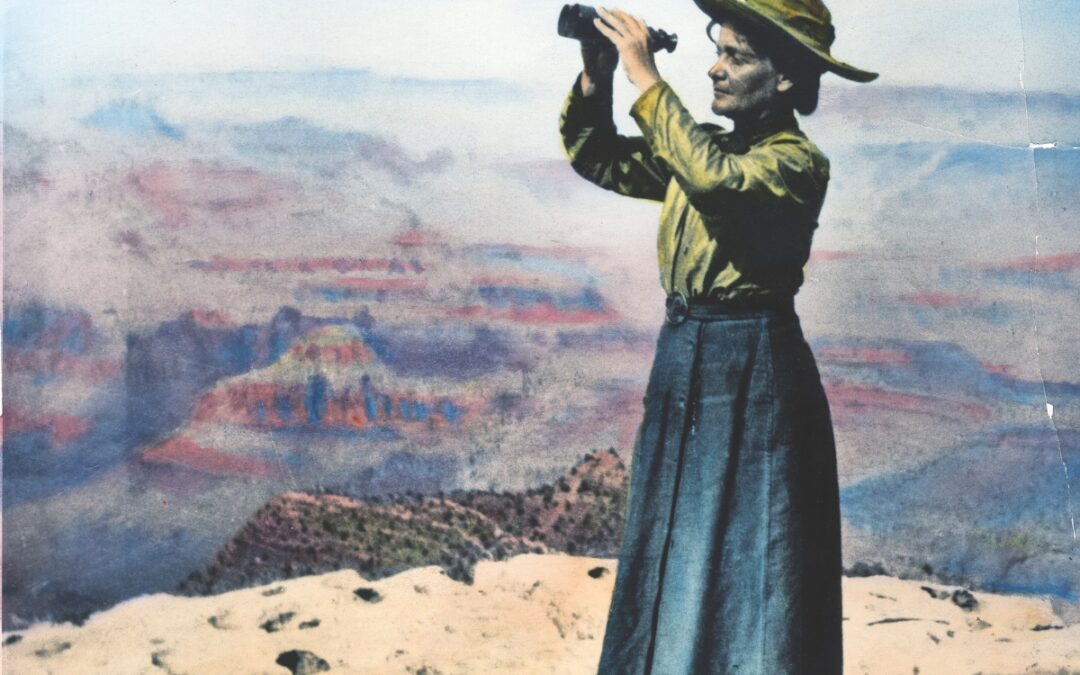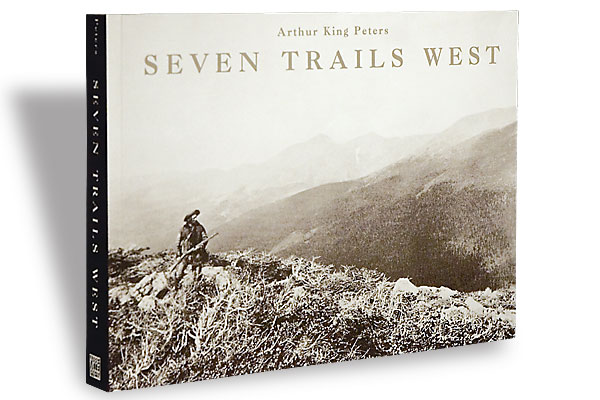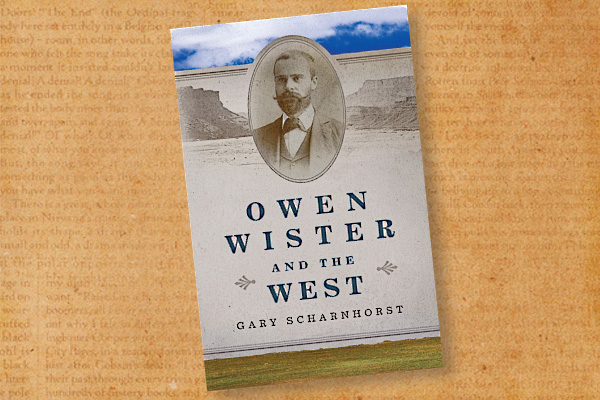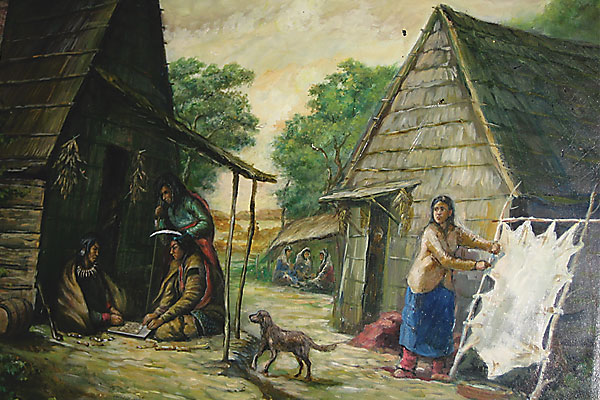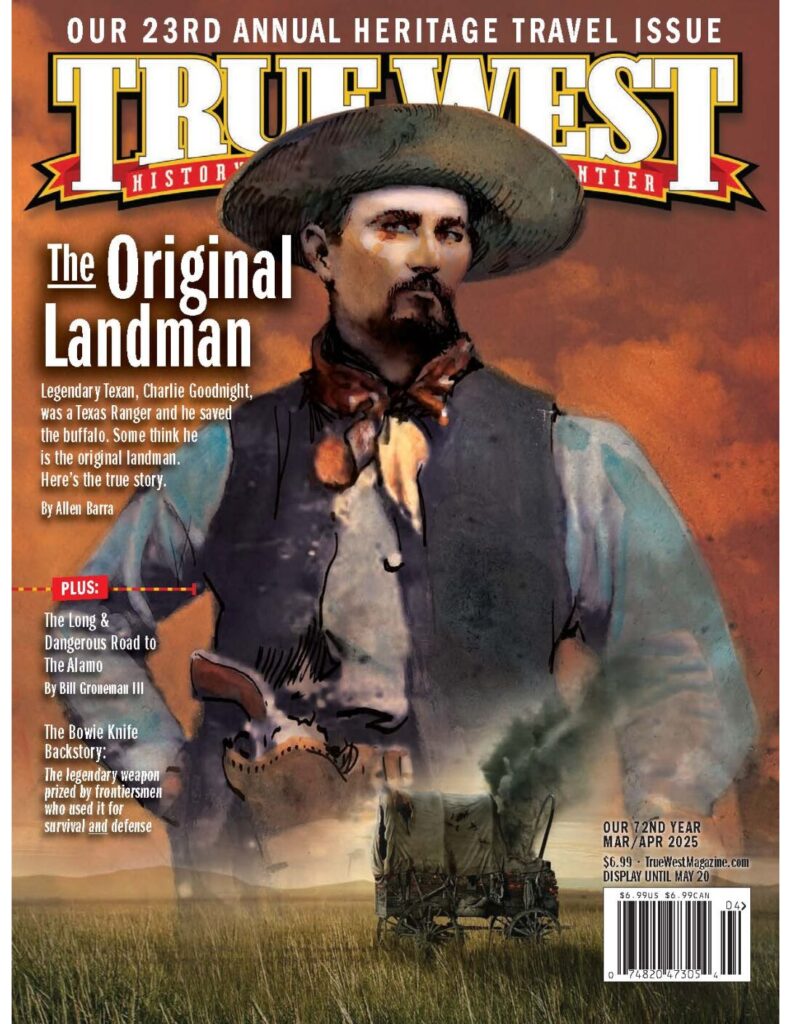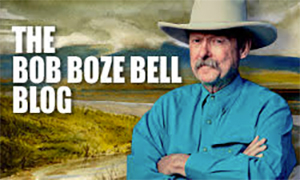DISCOVERING AMERICA’S HISTORIC FRONTIER TOWNS
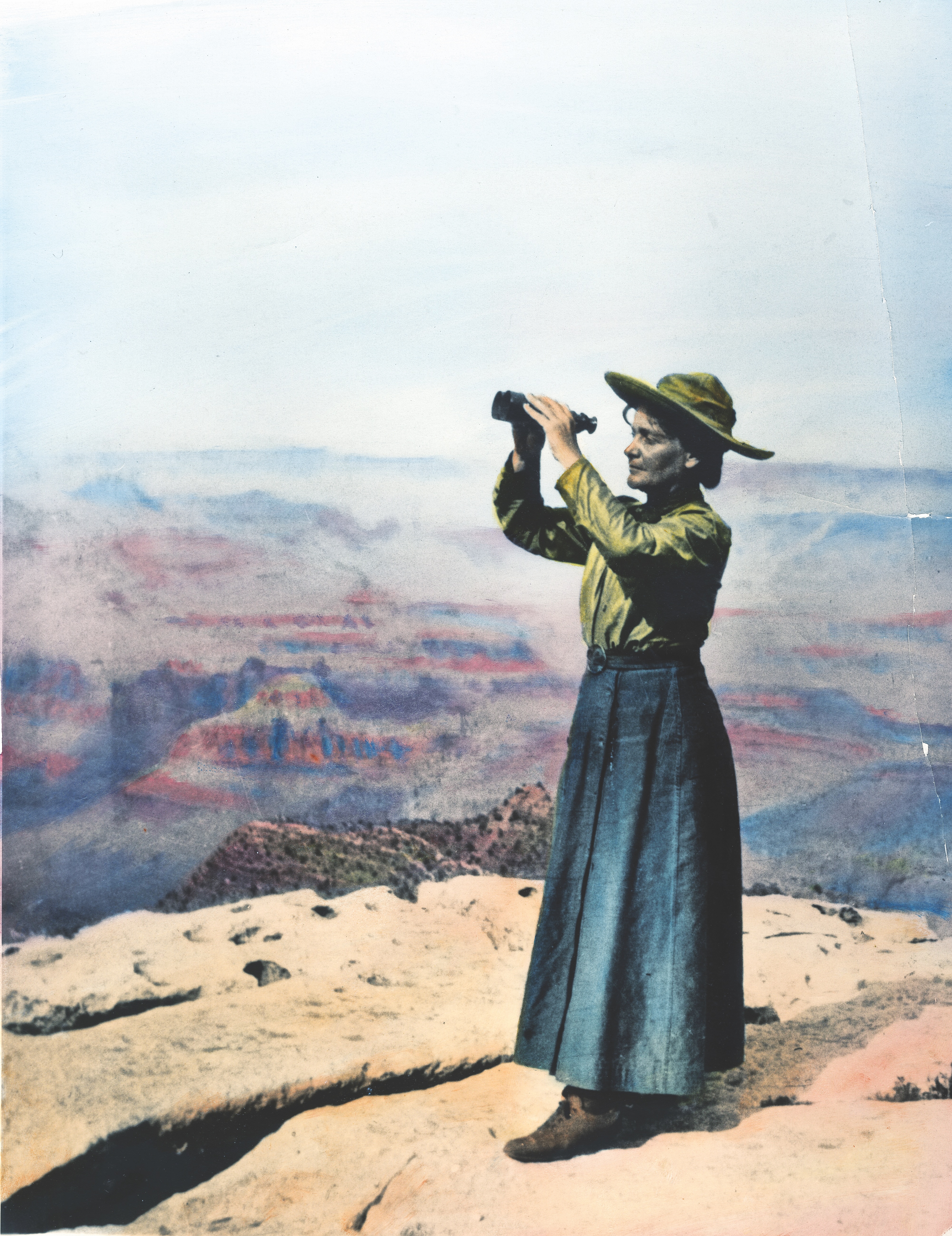
From Arizona’s sunbaked deserts to Wyoming’s untamed wilderness, America’s historic frontier towns capture the enduring spirit of the Wild West. These storied destinations take travelers on a journey through time, offering glimpses into an exciting era of cowboys, outlaws and pioneers. Walk Arizona’s saloon-lined streets, uncover Colorado’s mining legacy and tales of Doc Holliday, or explore Kansas, where cattle drives and infamous gunfights have left their indelible marks on the prairie. Montana’s sweeping landscapes echo with gold rush dreams, while Texas’s Hill Country blends rich heritage with rugged beauty. Meanwhile, Wyoming brings the legends of Buffalo Bill and Butch Cassidy to life. Each town holds a piece of America’s frontier past, creating a road trip steeped in history, adventure and iconic Western charm.
– ARIZONA –
Highways to History Exploring the Wild West through Arizona’s Historic Towns
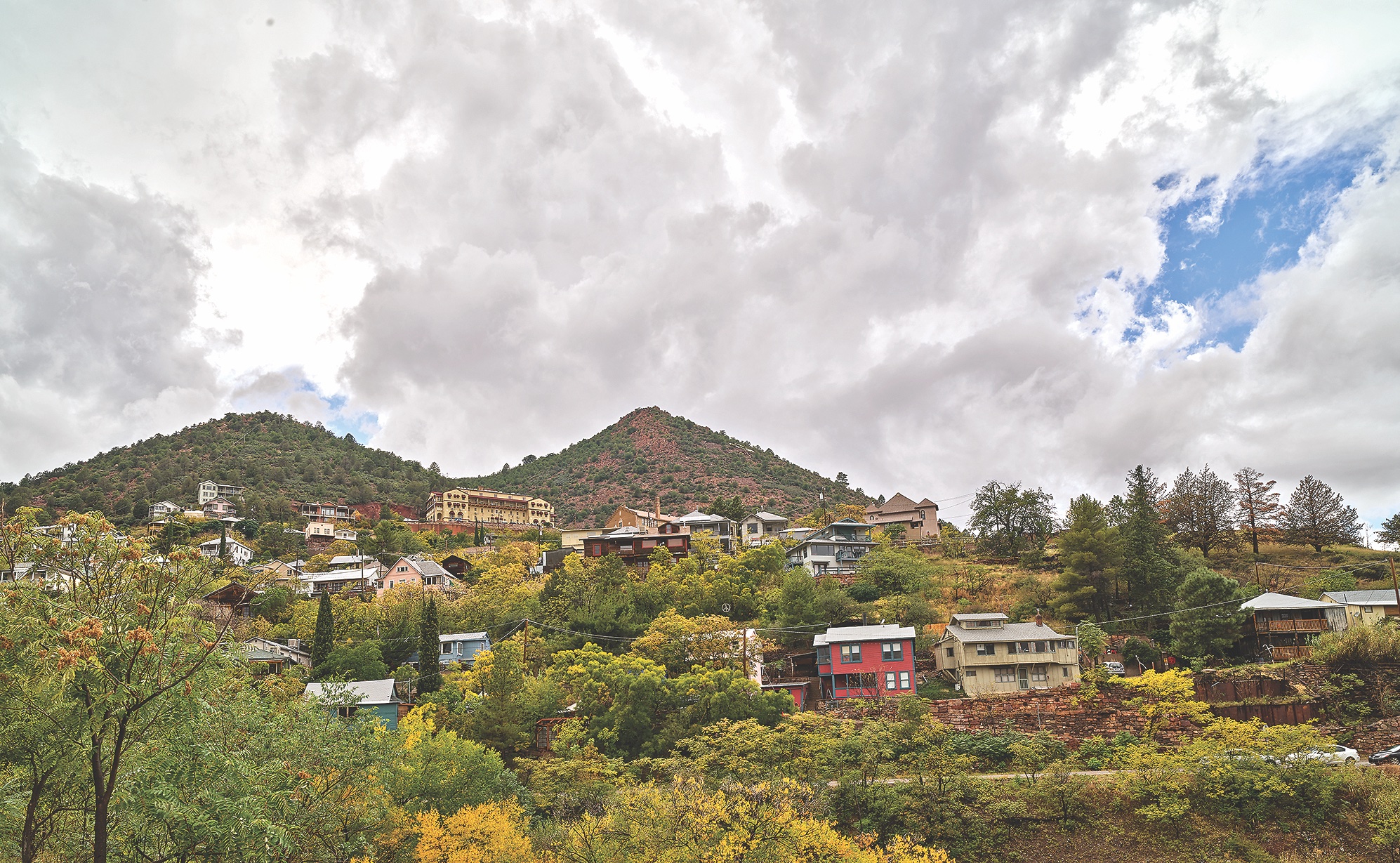
Arizona is a state where the spirit of the Old West lives on, from its dusty deserts to its rugged mountains. It’s a land steeped in rich history, from Native American heritage and Spanish exploration to cowboy legends and mining booms. If you’re looking to take a road trip through time, Arizona’s historic towns are the perfect destinations. Whether it’s a visit to iconic Wild West gunfight sites, a stroll down streets lined with old-time saloons and shops, or exploring museums that tell the stories of pioneers and outlaws, Arizona offers an unforgettable journey into the past. Here’s a guide to some of the state’s most historic towns that bring the Wild West to life.
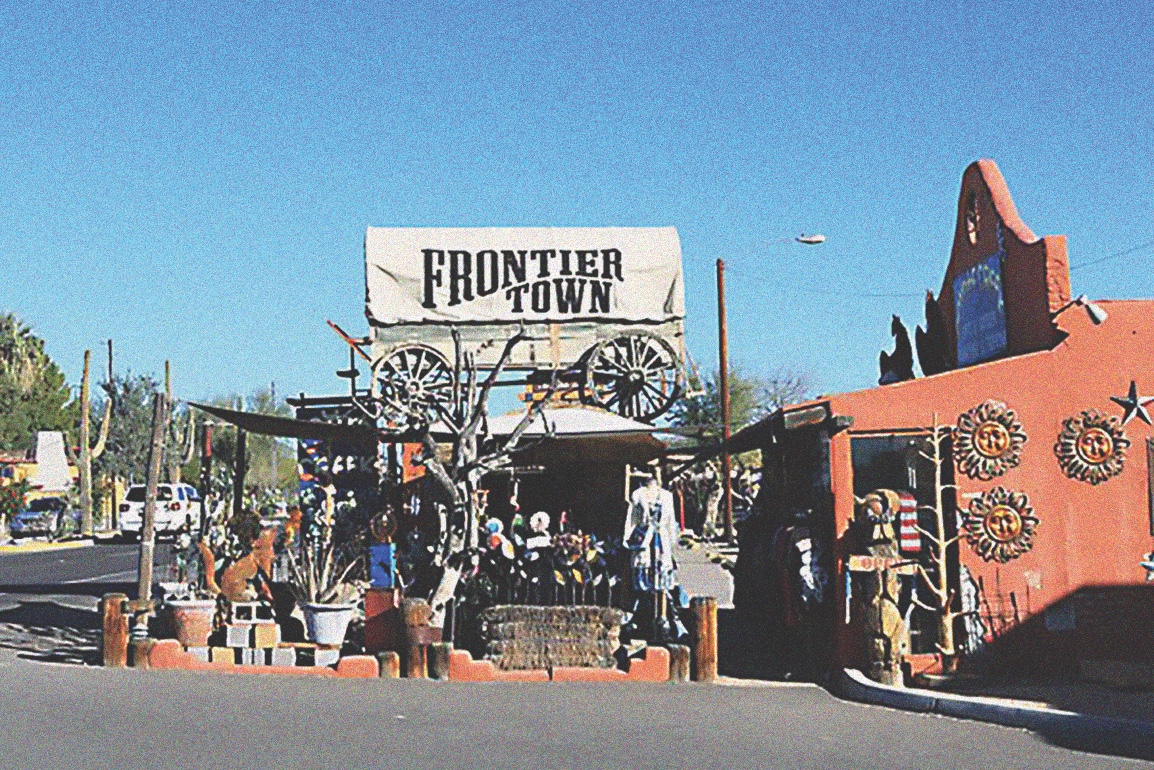
Cave Creek: A Cowboy’s Dream
Nestled in the foothills of the Sonoran Desert, Cave Creek offers a true taste of the Old West. Known for its Wild West vibe, the town attracts visitors looking for a bit of cowboy culture and history. Famous for its honkytonks Harold’s and The Buffalo Chip, shoppers will love Watson’s Hat Company and the Cave Creek Cowboy Company for the real McCoy in cowboy attire. If you’re looking for a piece of Western heritage to take home, dozens of shops line the main drag offering art, history and rustic home decorations. The Cave Creek Museum offers an intriguing look into the town’s past, with exhibits on early settlers, mining and the cultural influences that shaped the area. With its Western shops, old-time saloons and stunning desert scenery, not to mention iconic restaurants like Big Earl’s Greasy Eats and Cryin’ Coyote Barbecue, Cave Creek is the perfect starting point for anyone looking to experience Arizona’s cowboy history.
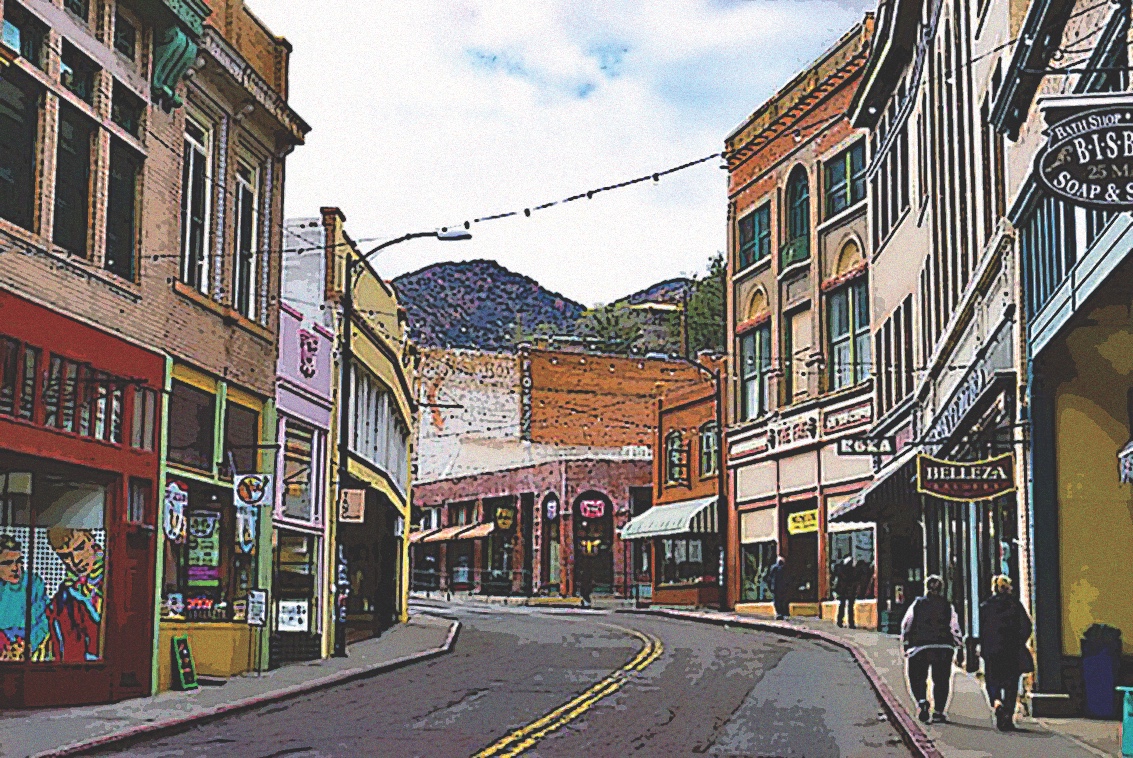
Bisbee: A Mining Town with a Soul
Once one of the largest mining towns in the United States, Bisbee is a beautifully preserved slice of Arizona history. Known for its vibrant arts scene and historic architecture, Bisbee offers a unique look into the state’s mining past. The town was founded in the late 1800s when copper was discovered in the area, and it soon became one of the most prosperous mining centers in the country. Today, visitors can explore the Bisbee Mining & Historical Museum, which tells the story of the town’s copper boom and the immigrant miners who built it. A visit to the Queen Mine Tour offers a firsthand look at the underground life of miners. Bisbee’s picturesque, hilly streets lined with Victorian homes and quirky shops give the town a distinctive charm that mixes history with modern creativity, and a visit wouldn’t be complete without a visit or stay at the historic Copper Queen Hotel.
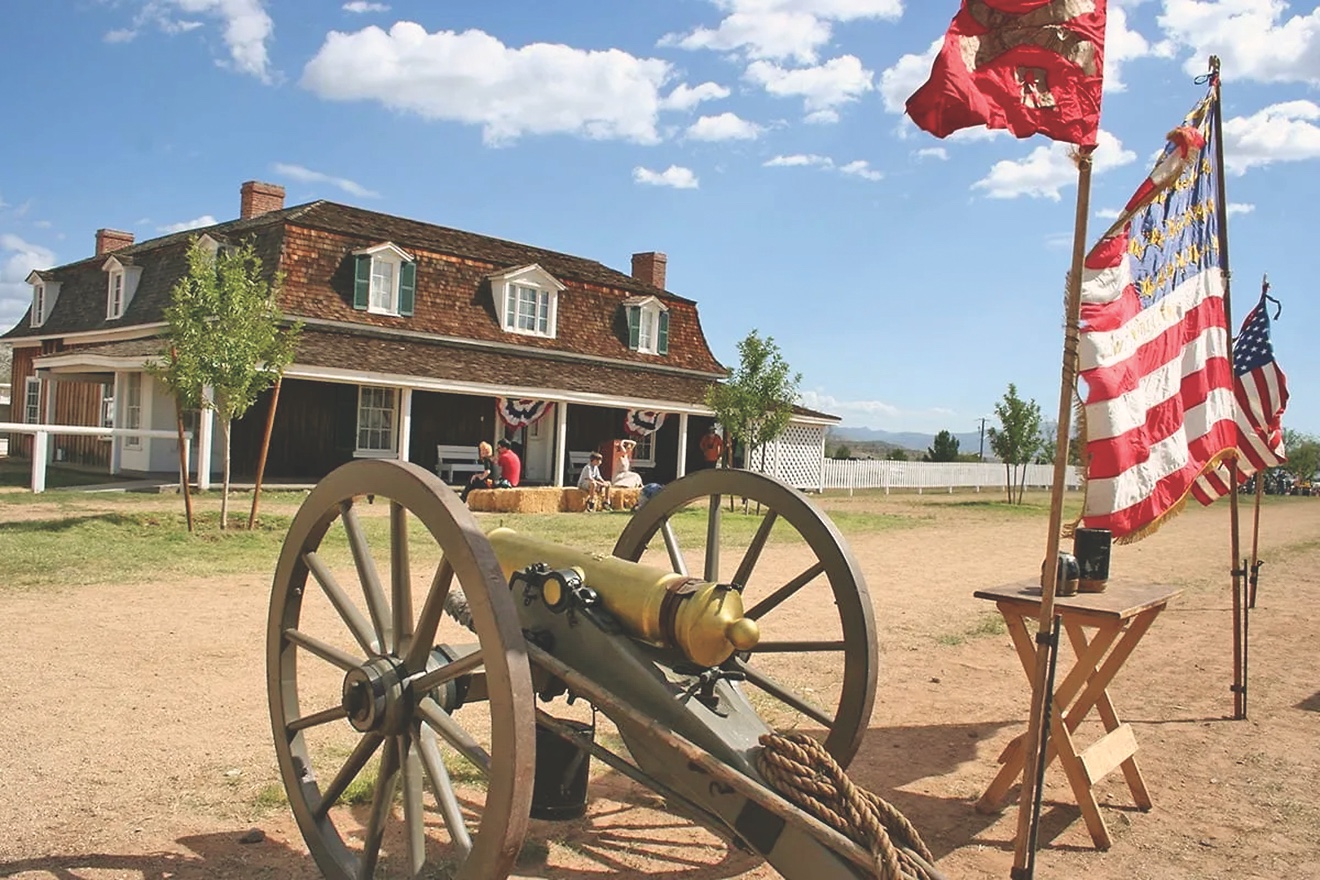
Camp Verde: A Crossroads of Cultures
Camp Verde, located along the Verde River, is rich in Native American and military history. Once a military post during the Indian Wars, the town has evolved into a historic destination with strong ties to its past. Fort Verde State Historic Park preserves the site of the original fort, and visitors can learn about the soldiers and settlers who lived and fought in the area. The fort also houses the Verde Valley Archaeology Center, showcasing Native American artifacts and prehistoric history from the region. Camp Verde is a great place to explore the intersection of Native American, military and Western history while taking in the scenic beauty of Arizona’s Verde Valley.

Jerome: A Ghost Town Reborn
Perched on the side of Cleopatra Hill, Jerome is a former mining town turned thriving artist enclave. Once known as the “Wickedest Town in the West,” Jerome boomed during the copper mining days of the late 19th and early 20th centuries. In its heyday, Jerome was the wealthiest mine in the world owned by one man, but when the mines closed in the 1950s, the town became a near ghost town. Today, Jerome is a place where history and art collide. Jerome State Historic Park offers a look at the town’s mining heritage, housed in a former mansion that was once the residence of the town’s mine manager. Visitors can also explore the Jerome Historical Society Mine Museum to learn about the boom and bust that defined the town. Jerome’s narrow, winding streets are now lined with art galleries, boutiques, winery tasting rooms and restaurants, making it a quirky and fascinating destination with a colorful history.
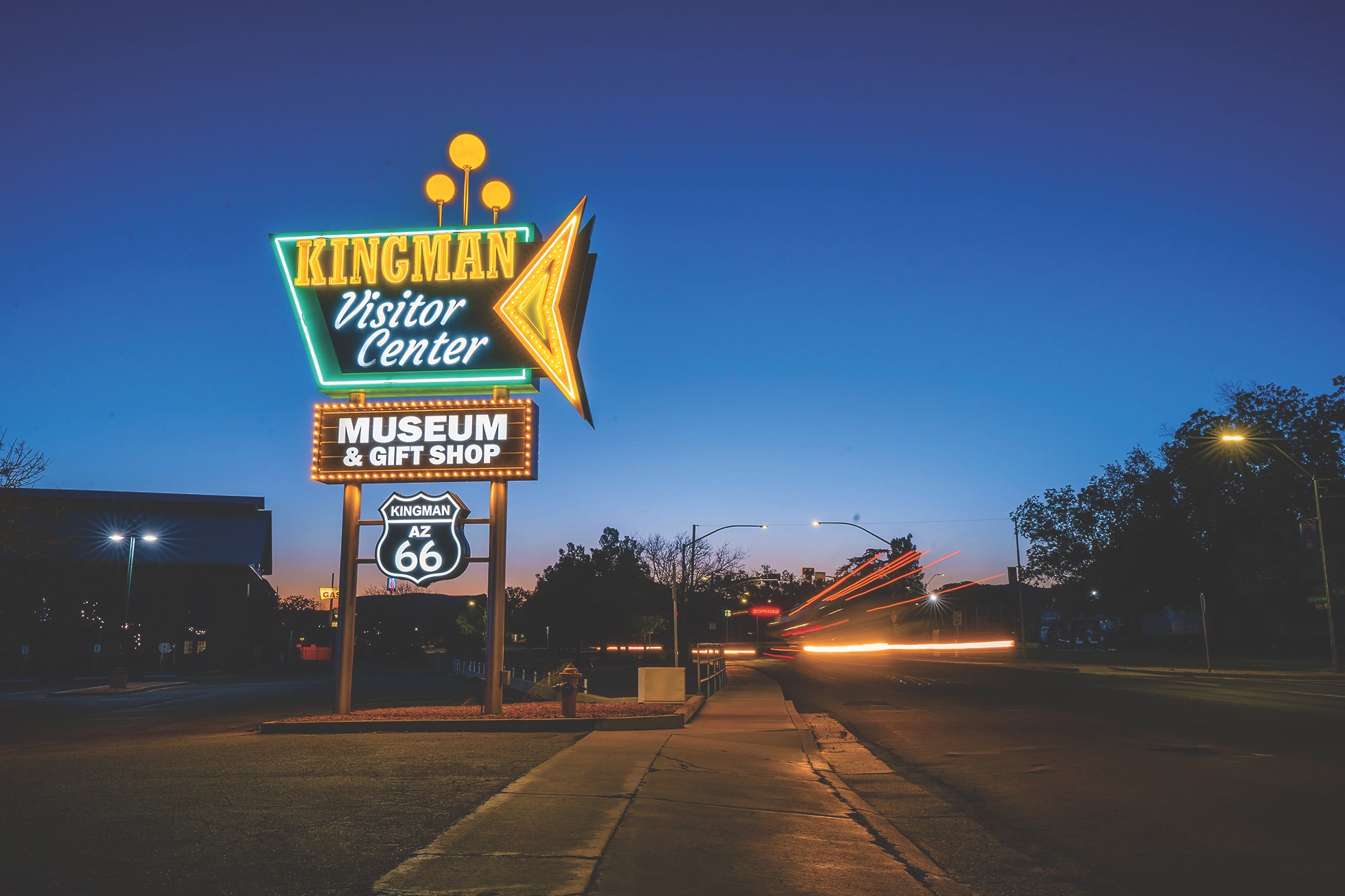
Kingman: A Route 66 Classic
Kingman, hometown of True West Executive Editor Bob Boze Bell, is one of the classic towns along the iconic Route 66. It’s full of Western history and nostalgic charm with its Old West past and vibrant Route 66 culture. The Mohave Museum of History and Arts is a great place to start, where visitors can learn about the area’s Native American, mining and railroad history. The Mohave County Historical Society Museum is another must stop. For fans of the historic highway, the Route 66 Museum gives a deep dive into the legacy of the Mother Road and its role in the development of the American West. Kingman’s historic downtown has a great selection of old-time diners, vintage shops and motels that make it feel like stepping back in time.
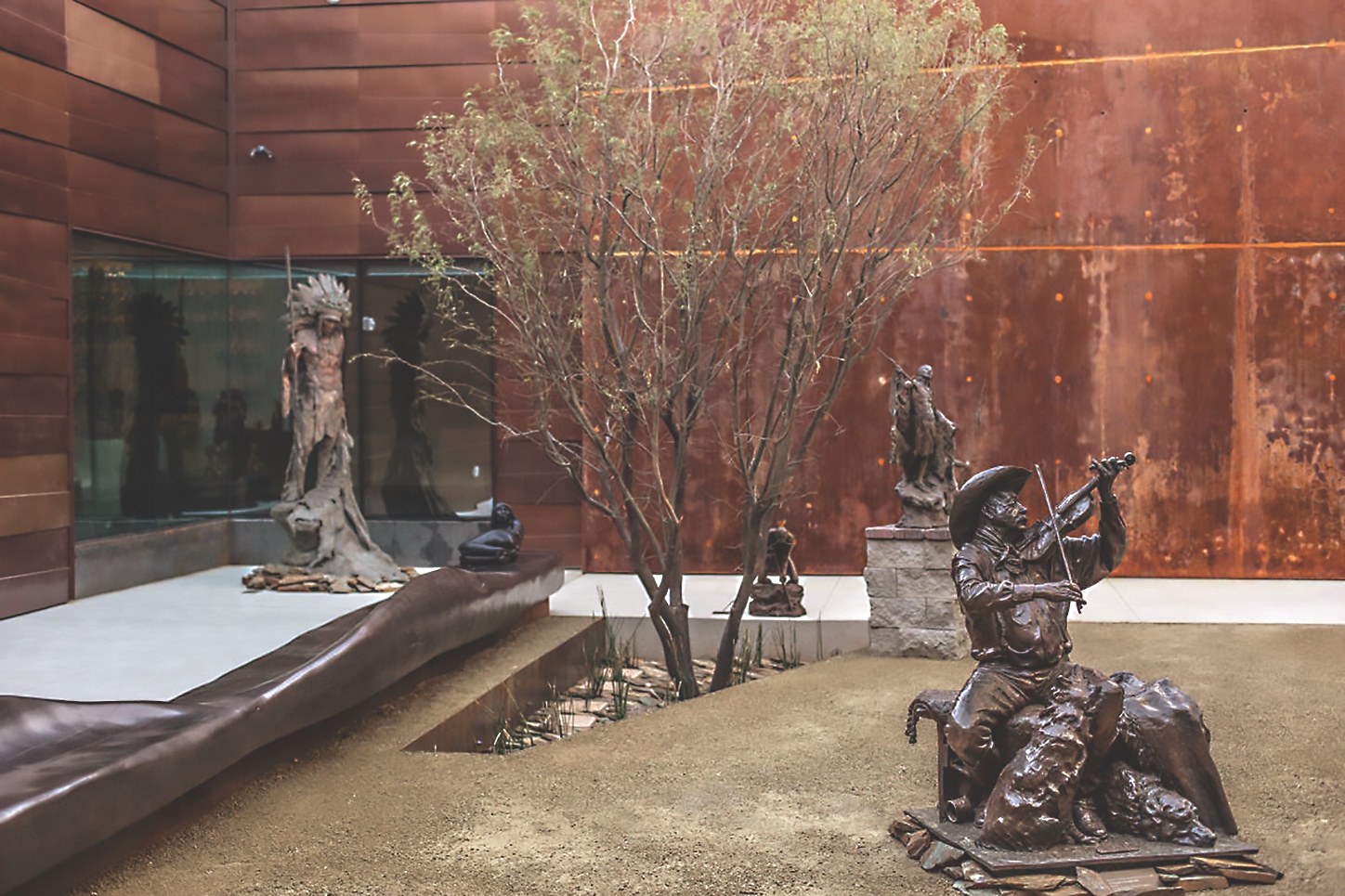
Old Town Scottsdale: A Modern Western Experience
While Scottsdale is known for its luxury resorts and upscale shopping, Old Town Scottsdale offers a glimpse into the town’s Old West roots. Founded in the 1880s, Scottsdale was originally a farming community and later developed into a key town for cattle ranchers. Today, Old Town Scottsdale is a vibrant mix of historic buildings, art galleries and Western-themed shops. The Scottsdale Historical Museum provides insight into the town’s early days, including its ties to the native Hohokam culture, it’s agricultural past and its role as a staging area for cattle drives. Scottsdale’s Western Spirit: Scottsdale’s Museum of the West its highlight, offering exhibits on the history of the American West, including cowboy culture, Native American artifacts and Western art.
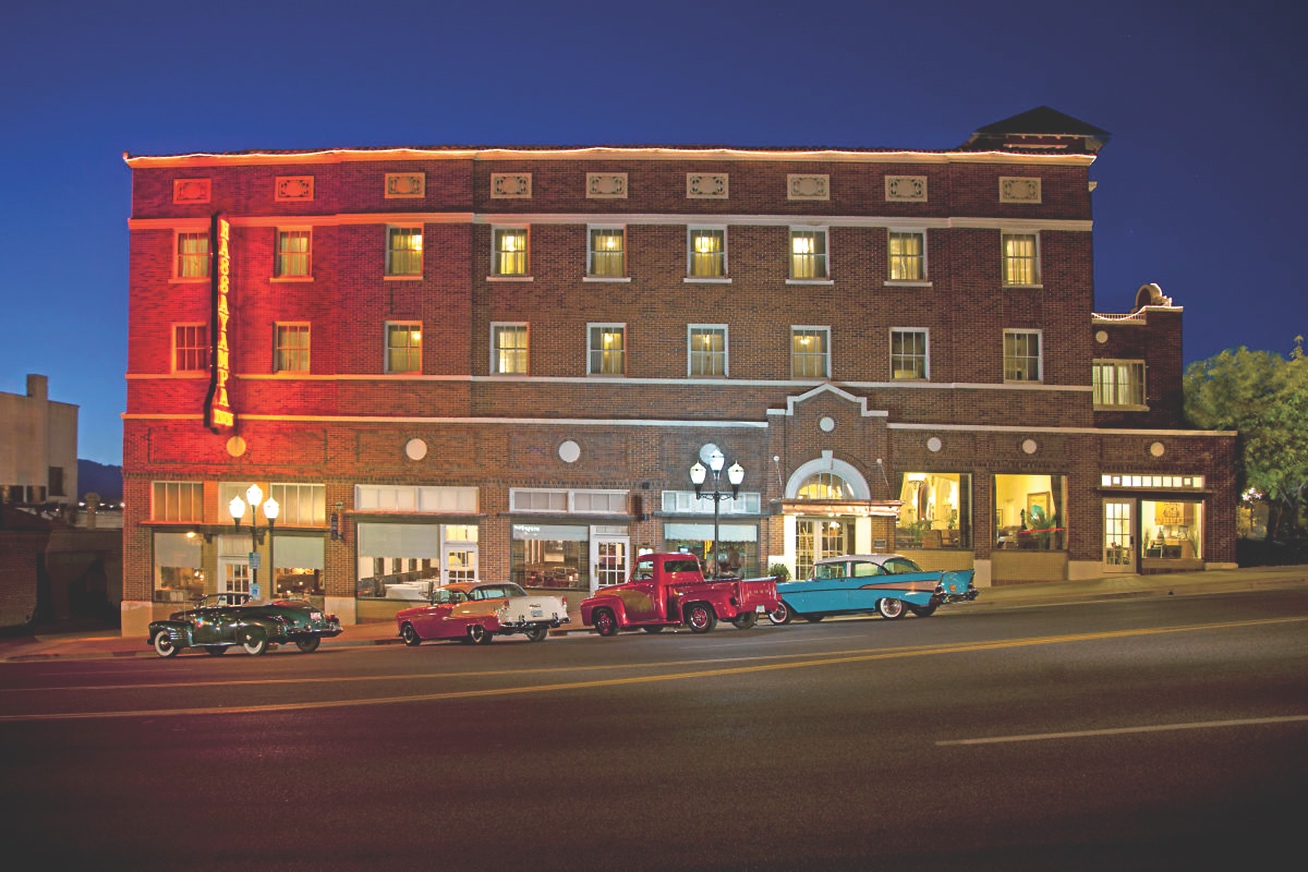
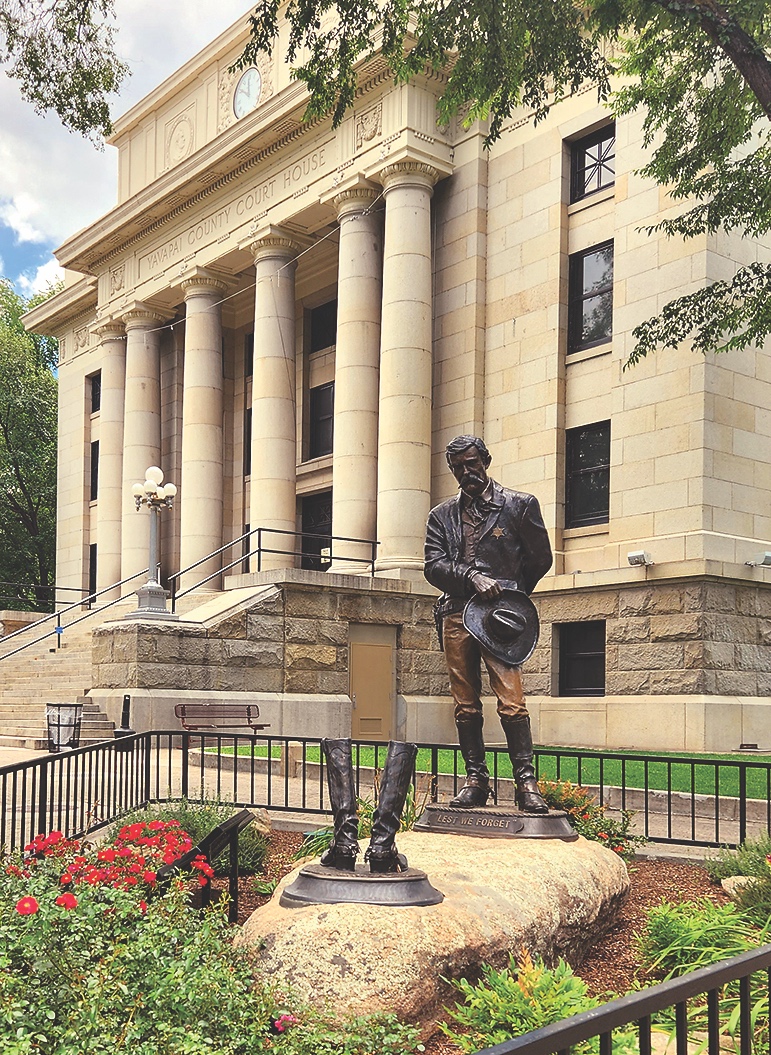
Prescott: The Old West Lives Here
Prescott is often referred to as “Everybody’s Hometown” and is a must-see stop for those interested in Arizona’s Wild West history. Established in the 1860s, Prescott became Arizona’s territorial capital and was a key player during the state’s early years. The town’s historic Whiskey Row, once home to 40 saloons and gambling halls frequented by lawmen, outlaws, including Doc Holliday and Wyatt Earp, is now known for its live music scene, art galleries, candy shops and of course its famous saloons including the iconic Palace Restaurant & Saloon. The Sharlot Hall Museum offers a deep dive into the area’s history, focusing on Native American culture, early pioneers and the founding of Prescott. The town is also famous for hosting Frontier Days, The World’s Oldest Rodeo. For Western art enthusiasts, the Phippen Museum showcases some of the best cowboy and Western art in the state. Prescott’s historic homes, old churches and charming town square offer a glimpse into life in Arizona during the 19th century.
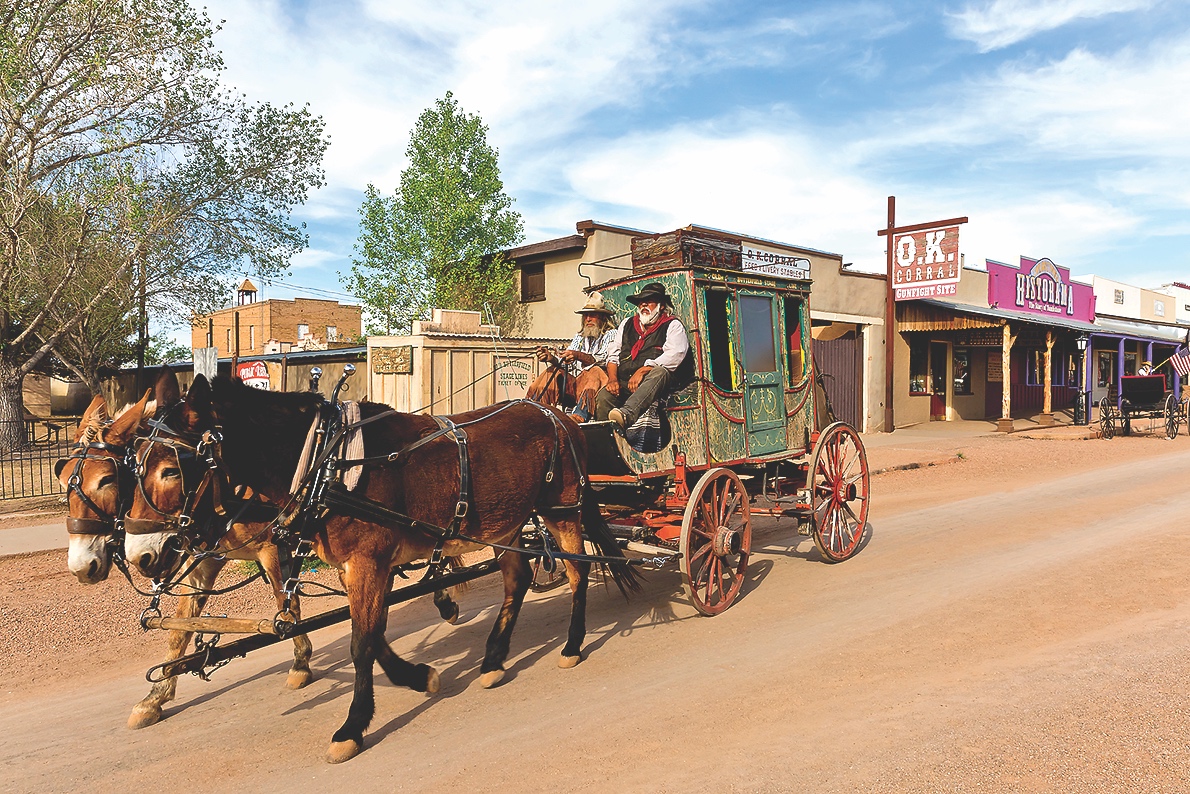
Tombstone: The Town Too Tough to Die
No Western road trip is complete without a stop in Tombstone, the town made famous by the O.K. Corral Gunfight. Known as the “Town Too Tough to Die,” Tombstone was once one of the most lawless places in the West, home to infamous figures like Wyatt Earp, Doc Holliday and the Clanton gang. Today, visitors can step back in time with a tour of Big Nose Kate’s and The Crystal Palace Saloon, where the colorful characters of Tombstone once gathered. The Bird Cage Theatre, an original Wild West theater, is a must-see, offering a glimpse into the entertainment that once flourished here. The O.K. Corral is historic streets, authentic saloons
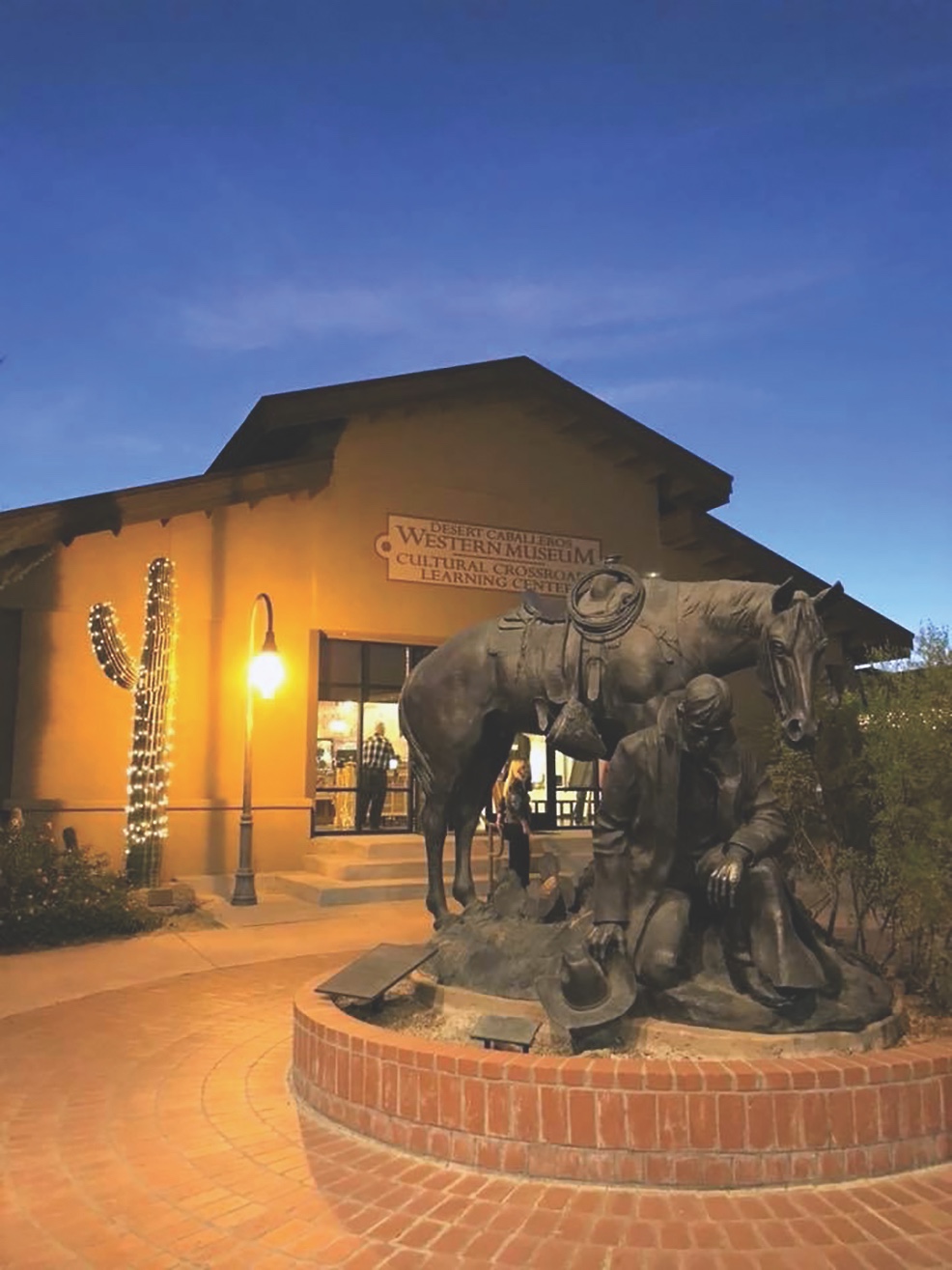
Wickenburg: A Desert Town with a Rich Legacy
Wickenburg is a charming desert town with deep roots in mining and ranching history. Originally a mining town, Wickenburg was founded in the 1860s and later became known for its cattle ranching and horse trading. Desert Caballeros Western Museum is a key stop for anyone interested in the region’s history, offering exhibits on Native American culture, early ranching life and the history of the American cowboy. Wickenburg is also home to the Vulture Mine, an old gold mine that was one of the richest in Arizona, and visitors can take tours to learn about the boom and bust of mining in the area. The town’s historic downtown area is full of Western charm, with shops and restaurants that reflect its cowboy past. A stay at Rancho de los Caballeros, the Flying E Guest Ranch, or The Kay El Bar, Wickenburg’s oldest guest ranch, will make your trip to Wickenburg a bit more special.
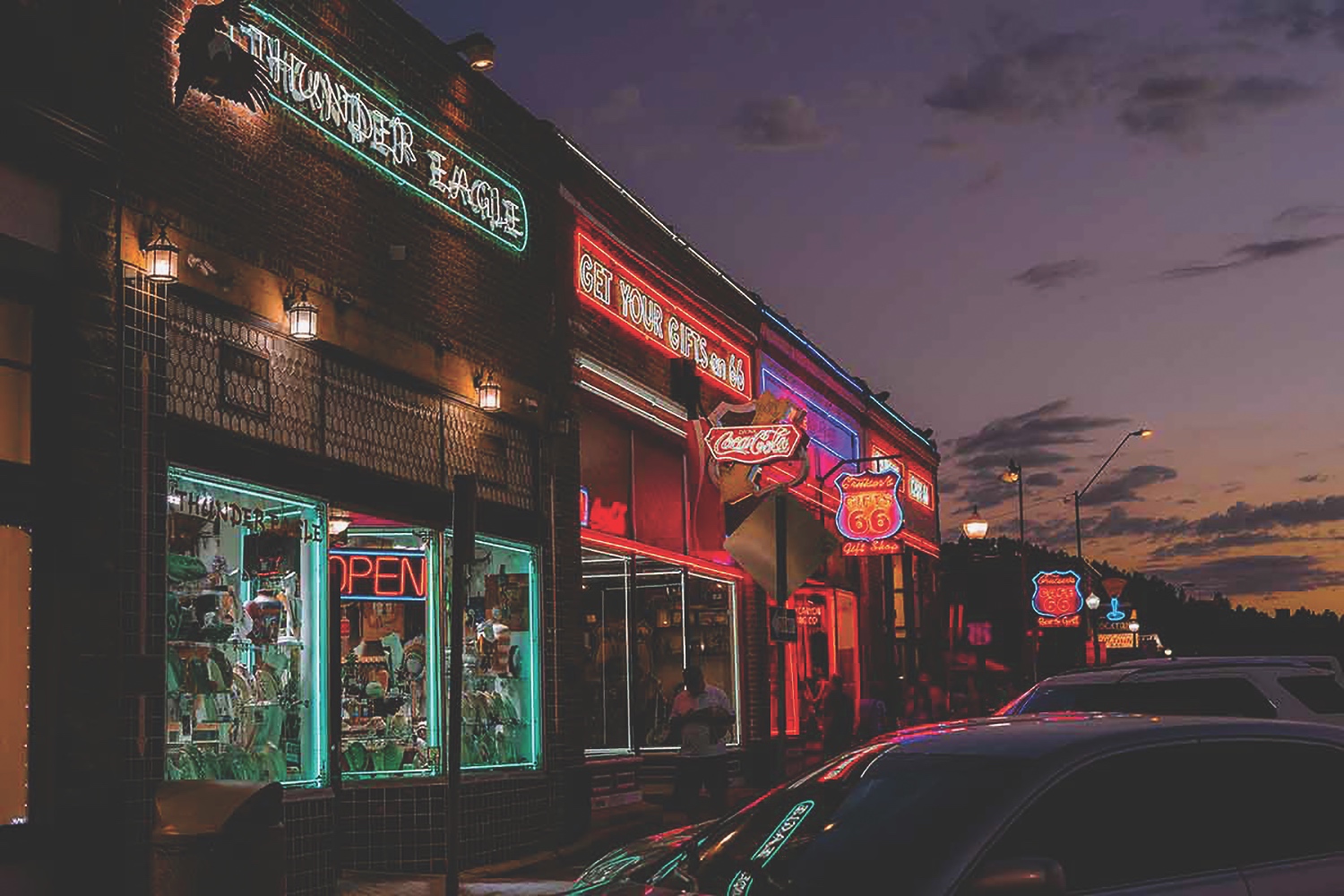
Williams: Gateway to the Grand Canyon
Williams, located along historic Route 66, is often called the “Gateway to the Grand Canyon” because it serves as a hub for visitors heading to one of the world’s most famous natural wonders. Williams’ Old West atmosphere is reflected in its vintage storefronts, diners and motels. A highlight of Williams is the Grand Canyon Railway, which offers a scenic train ride to the Grand Canyon, providing an unforgettable way to experience Arizona’s wilderness. The town also has the Williams Depot, a historic train station where visitors can learn about the importance of the railroad to the town’s history. Williams offers the perfect blend of Western charm and natural beauty, making it a great stop for anyone exploring Arizona’s history.
– COLORADO –
Lawmen and Outlaws Exploring Colorado’s Historic Towns
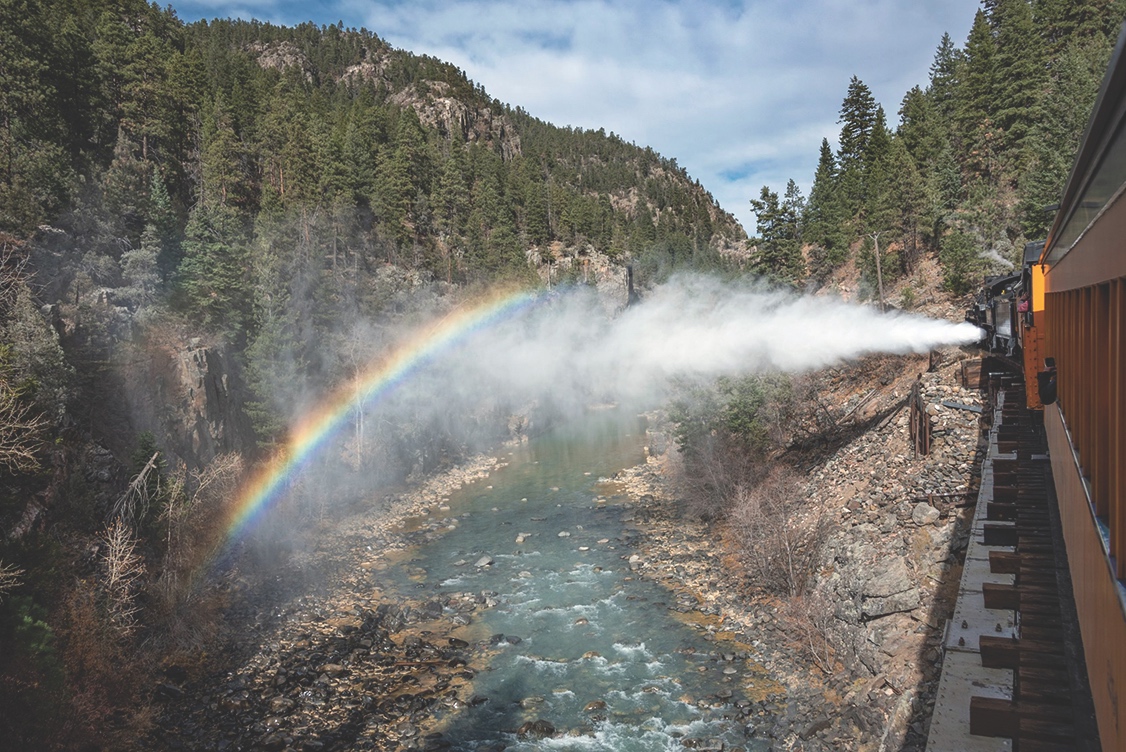
Nestled among the towering Rocky Mountains, Colorado is a land of rugged beauty and rich history. The echoes of lawmen and outlaws still resonate across its landscape, where mining towns once flourished, railroads cut through the wild frontier and notorious figures like Kid Curry and Doc Holliday made their mark. From the snow-capped peaks of the San Juan Mountains to the bustling streets of historic downtowns, Colorado’s Wild West towns offer visitors a chance to step back in time and experience the legends of the American frontier. Whether you’re interested in the tales of famous outlaws, colorful pioneer, or the lawmen who brought them to justice, these towns reflect the history of the Old West. Here’s your guide to some of Colorado’s most fascinating historic destinations, where the stories of the Wild West are just waiting to be uncovered.
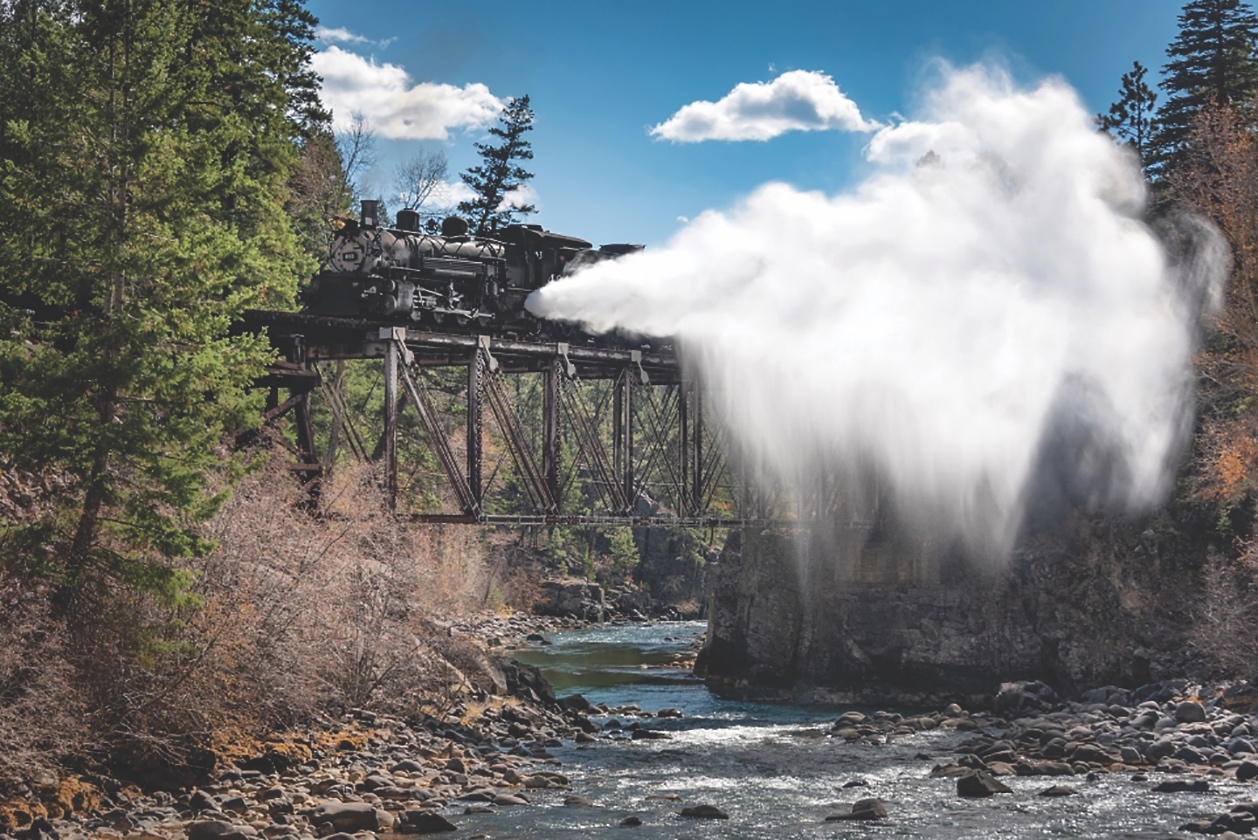
Durango: The Gateway to the Old West
With its historic district and the iconic Durango & Silverton Narrow Gauge Railroad, Durango is a town that’s deeply connected to Colorado’s Wild West heritage. Founded in the late 19th century, Durango was a key stop on the Denver & Rio Grande Railroad, bringing prosperity to the region’s mining industry. Today, the train still runs from Durango to Silverton, offering a scenic ride through the San Juan Mountains. Durango’s historic downtown, with its well-preserved Victorian buildings, including the elegant Rochester and Strater Hotels, serves as a reminder of the town’s frontier past. For a deeper dive into Durango’s Wild West history, visit the Durango & Silverton Narrow Gauge Railroad Museum or the Animas Museum, which covers everything from Native American history to mining and railroad heritage. It’s worth timing your visit for the annual Durango Cowboy Gathering and a classic western supper at Bar D Chuckwagon Supper Show.
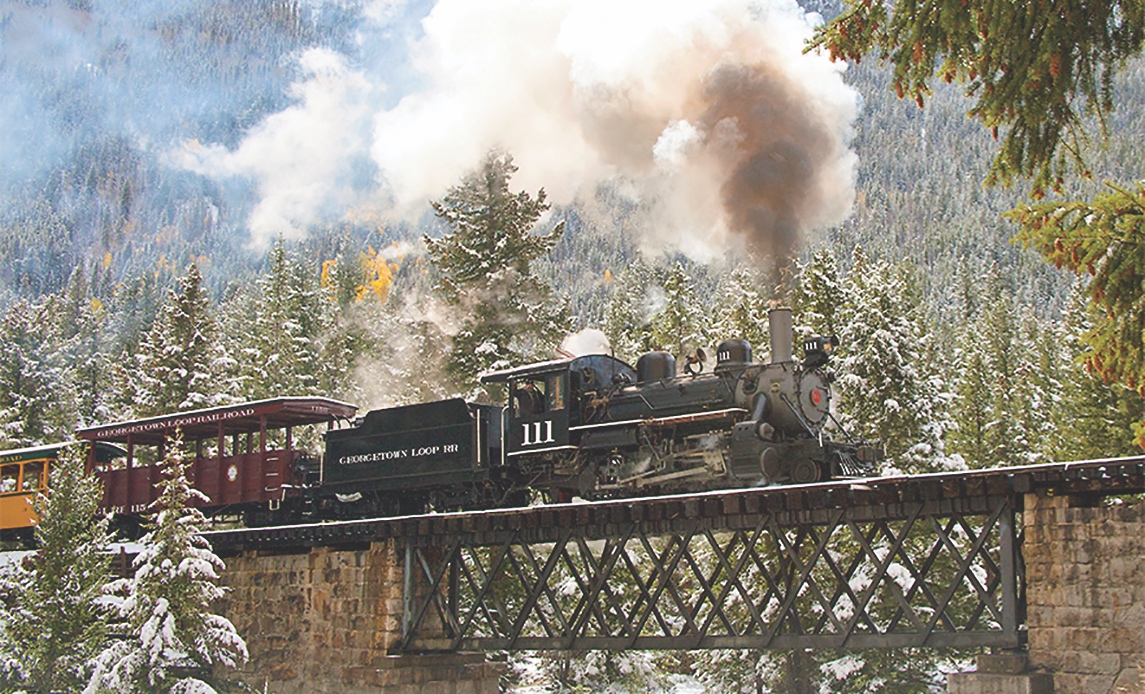
Georgetown: The Silver Mining Town
Nestled in a picturesque mountain valley, Georgetown was once one of Colorado’s most prosperous silver mining towns. The town’s history is still visible in its beautifully preserved Victorian buildings, making it a perfect place to immerse yourself in the past. The Georgetown Loop Railroad offers a glimpse into the town’s mining days, taking visitors on a historic ride through tunnels and over bridges to nearby Silver Plume. For a more in-depth look at the town’s mining history, stop by the Georgetown Historical Museum, which showcases exhibits on the silver boom and the hardworking men and women who lived here. Georgetown is also home to a number of ghost stories, with tales of hauntings and mysterious happenings surrounding its historic buildings.
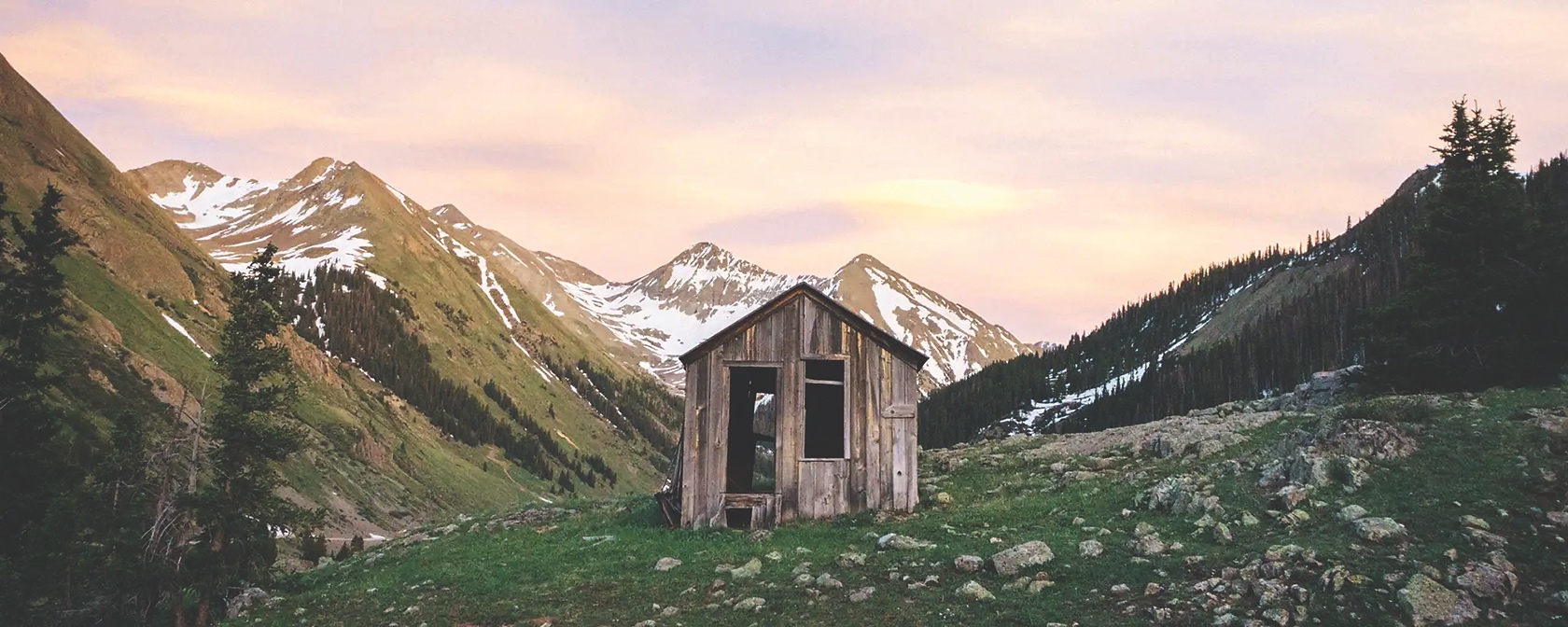
Silverton: The Mountain Retreat of the Wild West
Silverton is a rugged, highaltitude mining town that has retained its Wild West charm. Located at 9,318 feet, this remote town was once the center of silver mining in Colorado and played a significant role in the state’s economic development. Today, it feels like stepping into the past, with its preserved Victorian storefronts, narrow streets and old-time saloons. Silverton was a haven for outlaws. Visitors can explore the mining history at the Silverton Mining Museum or take a guided tour of the old mining districts near the town. The surrounding wilderness also offers hiking, ghost town exploration and incredible mountain vistas, and a stay at the Grand Imperial Hotel will make your visit complete.
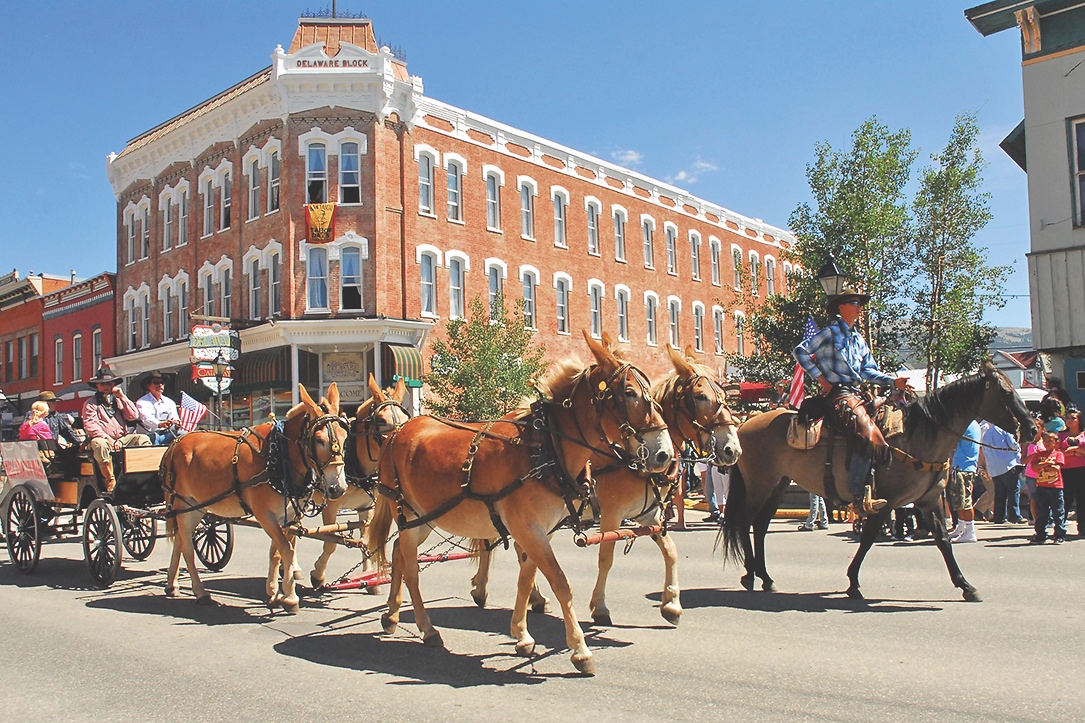
Leadville: The High- Elevation Wild West
At an elevation of 10,152 feet, Leadville is the highest incorporated town in North America and a key location in Colorado’s mining history. Founded during the Colorado silver boom, Leadville became a thriving mining hub, attracting pioneers, entrepreneurs and infamous outlaws. The town’s rich history is on full display at the Leadville Heritage Museum, where you can learn about its mining roots, its role in the labor movement and the lives of notorious figures like Doc Holliday, who spent time here. Leadville is also home to the historic Tabor Opera House, once the site of lavish performances, and the Mining District, where you can still see old mine shafts and equipment. Leadville’s Victorian architecture and mountain setting offer a glimpse into the hardships and triumphs of life on the frontier. Stay at the Delaware Hotel, make a stop at the National Mining Hall of Fame & Museum and take a ride on the Leadville, Colorado & Southern Railroad.
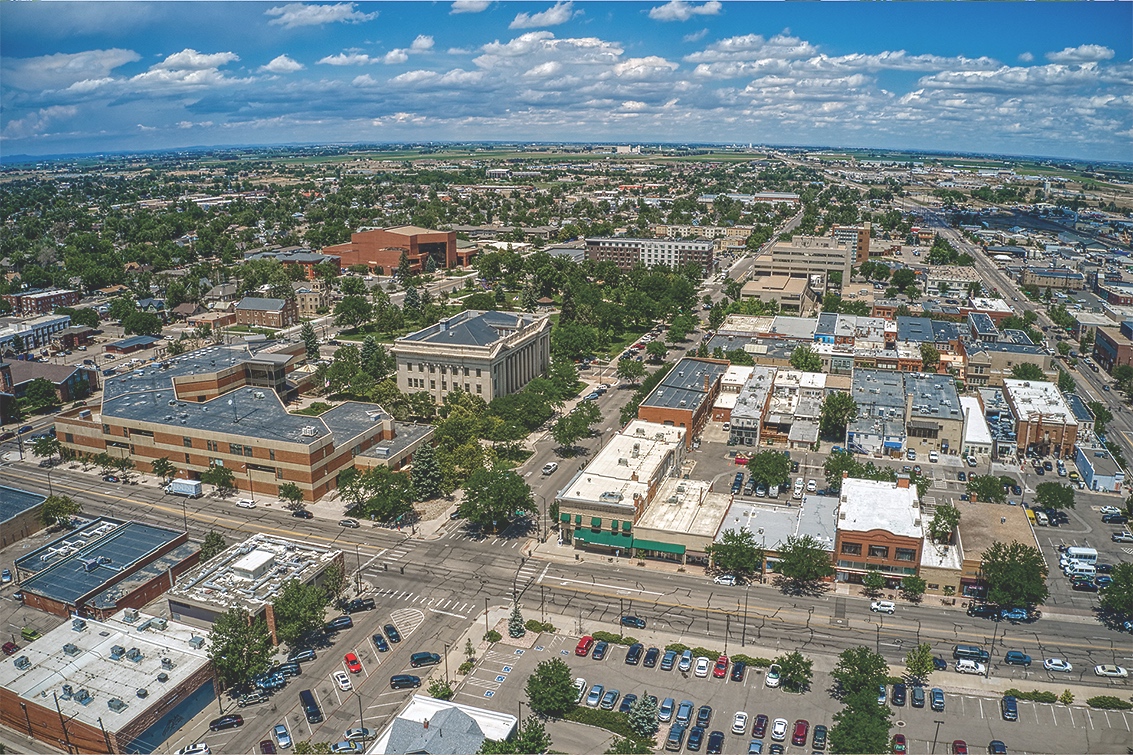
Greeley: The Frontier Farming Town
Greeley’s roots are firmly planted in agriculture, but the town has its fair share of Wild West history, particularly with its connections to the Colorado frontier. Founded in 1869 as a Utopian colony, Greeley grew into a bustling town that became known for its large-scale farming and cattle ranching. The Greeley History Museum offers a fascinating look at the town’s pioneer beginnings, including exhibits on homesteading, the rise of the sugar beet industry and the establishment of the Union Pacific Railroad. While not as wild as some of Colorado’s other mining towns, Greeley has its own unique frontier story to tell. It is home to the worldfamous Greeley Stampede Rodeo and the fine hatmaker, Greeley Hat Works, which will measure your head to exact proportions and design a custom hat for you and your own Western personality.
Glenwood Springs: A Soothing Oasis with Wild West Flair
Known for its geothermal hot springs and dramatic canyon views, Glenwood Springs offers a blend of relaxation and adventure tied to its Wild West roots. It was once a favorite retreat for Doc Holliday, and the legendary gunslinger spent his final days here. Visitors can pay tribute at his memorial in Linwood Cemetery. The town thrived during Colorado’s mining boom, and its historic downtown features charming 19th-century architecture. The historic Hotel Colorado offers timeless charm, and no visit to Glenwood Springs would be complete without a visit to Glenwood Springs Historical Society’s Frontier Museum and Doc Holliday Collection.
Morrison: The Gateway to Red Rocks and Western History
Nestled at the base of the stunning Red Rocks Amphitheatre, Morrison is a small town that packs a punch when it comes to Western history. The town played a part in the early cattle industry and was home to a number of prominent ranchers. Today, Morrison’s proximity to Denver and its location in the foothills of the Rockies make it a popular destination for history lovers and outdoor enthusiasts alike. Two popular attractions are The Fort Restaurant and Tesoro Cultural Center. The Morrison Natural History Museum offers exhibits on the region’s prehistoric past, while the nearby Red Rocks site is rich in local folklore and has a deep connection to the area’s frontier history. Though the town is now known for its vibrant arts scene, Morrison still holds echoes of the Wild West era.
Ouray: The Switzerland of America
Comfortably set in the heart of the San Juan Mountains, Ouray is a gem of the Old West. Known as the “Switzerland of America,” its breathtaking peaks and Victorianera charm make it a must-visit destination. The town’s history is steeped in mining, and visitors can delve into the past at the Ouray County Historical Museum or the Bachelor Syracuse Mine Tour. For those seeking a touch of luxury, the natural hot springs offer the perfect respite after a day of exploring. Ouray’s rugged surroundings and preserved history make it a quintessential Wild West experience and offers several comfortable places to stay including the Historic Western Hotel and Beaumont Hotel & Spa.
Ridgway: Cowboys, Cinema and Mountain Magic
Ridgway blends its Old West heritage with cinematic flair. This small town served as a filming location for classic Westerns like True Grit, and its ties to cowboy culture are evident in its ranching history and annual rodeo. Visitors can learn about the area’s colorful past at the Ridgway Railroad Museum or enjoy its modern arts scene at the town’s galleries. Surrounded by dramatic mountain landscapes, Ridgway offers easy access to outdoor adventures, from hiking to horseback riding. With its unique mix of history and natural beauty, Ridgway embodies the spirit of the frontier. For lunch be sure to visit True Grit Café and feast on “The Grit,” a triple-stacked chicken-fried steak burger topped with bacon and white gravy.
– KANSAS-
Cowboys, Outlaws and the Civil War Exploring Kansas’ Wild West Heritage
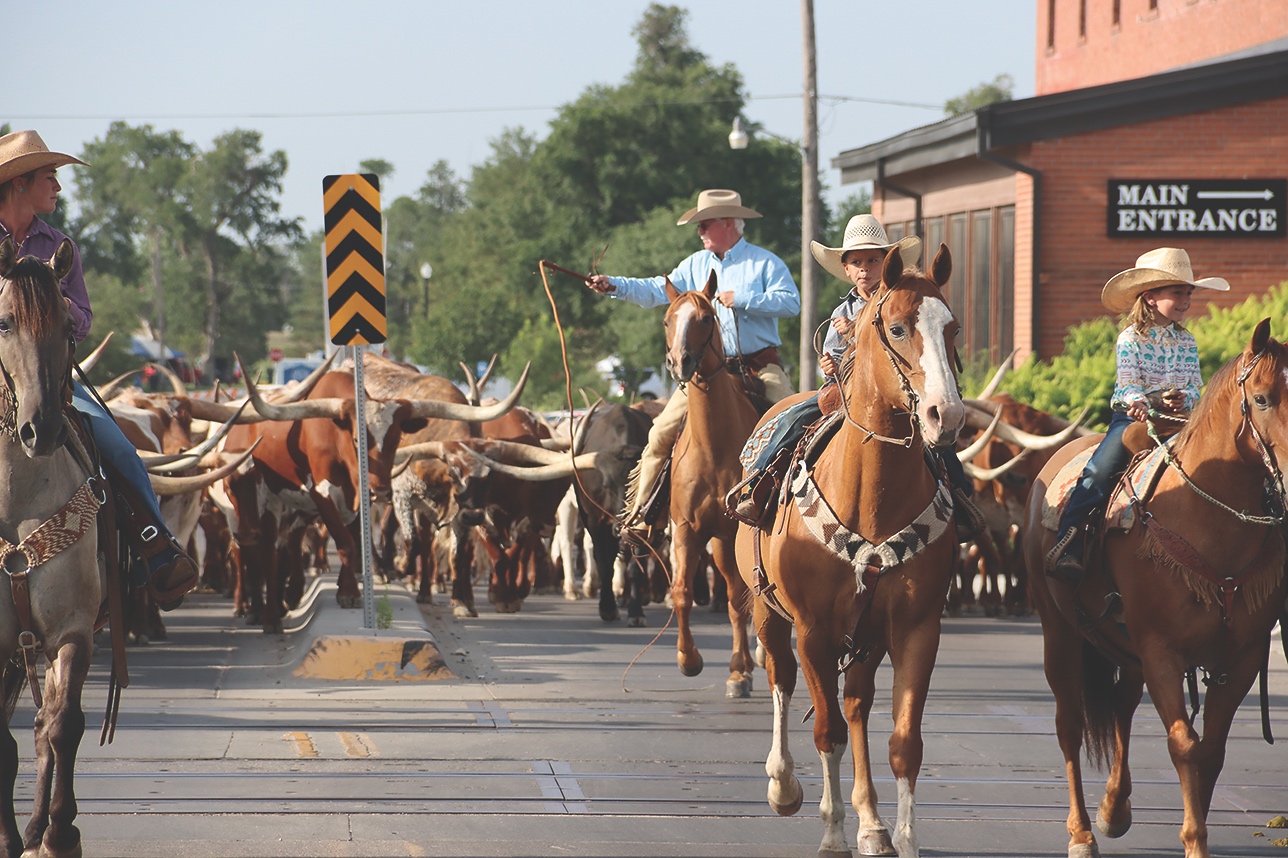
Kansas, often called the “Gateway to the West,” is a state where the frontier spirit is alive and well. Its prairies once echoed with the galloping of cowboys on horseback driving cattle across the open range, while lawmen and outlaws squared off in dusty streets of frontier towns. From the cattle trails to infamous gunfights, Kansas offers a rich tapestry of Wild West history, where the stories of cowboys, lawmen and painted ladies are woven into its very fabric. Today, these historic towns serve as living reminders of the untamed days of the American frontier, offering travelers a chance to step back in time and explore the legends that helped shape the West. Whether you’re following in the footsteps of legendary lawmen like Wyatt Earp or discovering the stories of infamous outlaws, Kansas invites you to experience the Old West in all its rugged glory. Here’s your guide to some of the most fascinating Wild West towns in Kansas.
Abilene: The Cowboy Capital
Abilene is a town where the Wild West truly comes to life, known for its pivotal role in the cattle drive era. As a major terminus of the Chisholm Trail, Abilene became a bustling hub for cowboys and cattlemen in the late 19th century. Today, visitors can explore the history of the cattle trade at the Kansas Central Railway Depot or the Abilene and Smoky Valley Railroad, which offers historic train rides, and the Dickinson County Historical Society & Museum. The town also hosts the Old West-themed Heritage Center, where you can learn about the lives of the cowboys, lawmen and outlaws who passed through. The highlight is the beautifully restored Old Town District, where you can walk the streets that once saw rowdy cowboys and painted ladies. Abilene is also the home of the Dwight D. Eisenhower Presidential Library, Museum & Boyhood Home, giving it an interesting blend of Wild West history and 20th-century political significance.
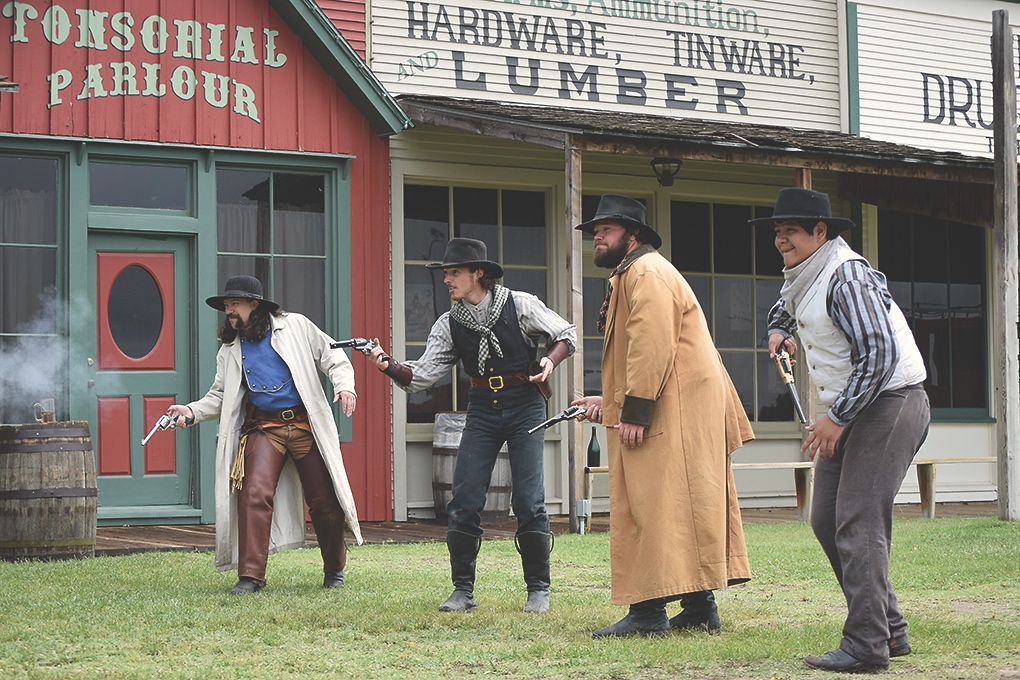
Dodge City: The Wickedest Town in the West
No town in Kansas has a more infamous reputation than Dodge City, once known as the “Wickedest City in the West.” Famous for its wild saloons, gunfights and rowdy cowboys, Dodge City was the quintessential frontier town. Visitors can step back into this raucous era at the Boot Hill Museum and Gunfighters Wax Museum, which preserves the town’s storied past with exhibits on outlaws, lawmen and the people who built the town. Take a tour of the Dodge City Trail and visit landmarks like the original Boot Hill Cemetery. The Dodge City Roundup rodeo and myriad other annual events keep the cowboy spirit alive today, making this a must-visit for Wild West enthusiasts.
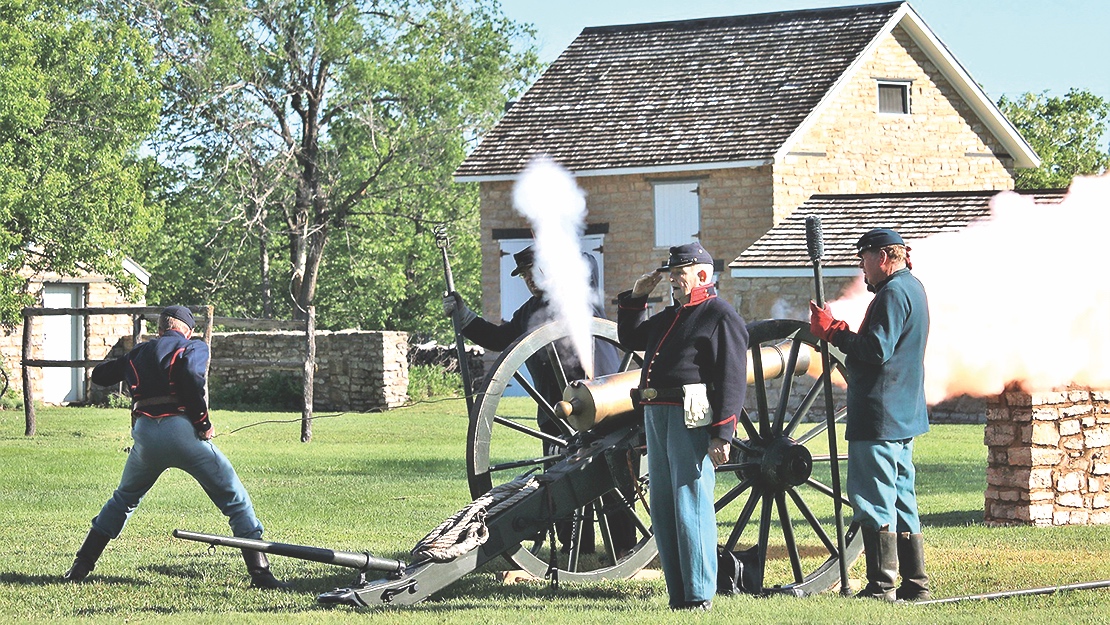
Fort Scott: The Military Frontier
As a vital military post during the Indian Wars, Fort Scott played a crucial role in the defense of settlers moving westward. The fort’s site, now preserved as a National Historic Site, offers an immersive look into the military life of the 19th century. Visitors explore the original buildings, including officer’s quarters, barracks and a working blacksmith shop, for a glimpse into the challenges faced by soldiers stationed here. Fort Scott’s location on the Santa Fe Trail also made it a key stop for pioneers, and the town celebrates its frontier history with a variety of events, including reenactments and heritage festivals.

Coffeyville: The Dalton Gang’s Last Stand
Coffeyville is forever tied to one of the most famous robberies in Wild West history: the failed heist by the Dalton Gang in 1892. The gang attempted to rob two banks simultaneously, but local lawmen and citizens fought back, resulting in a dramatic shootout that left the Daltons dead in the streets. The Dalton Defeat is commemorated at the Dalton Defenders and Coffeyville History Museum and Dalton Defenders Days, where you can learn about the robbery and the courageous citizens who helped bring the gang to justice. The Coffeyville Historical Society operates and maintains various museums and historical sites including the Dalton Defenders Museum, old city jail and Brown Mansion. Coffeyville’s charming downtown is full of historic buildings, and the town’s connection to the Wild West is an integral part of its identity, making it a must-see for history lovers.
Olathe: From Ranching to Railroads
Olathe, now a suburban city outside of Kansas City, was a vital hub for ranching and railroads in the 19th century. It was established as a railroad town in the 1850s and quickly became a key link in the transportation of cattle and goods. The Mahaffie Stagecoach Stop & Farm is a living history site where visitors can experience the lifestyle of early Kansas settlers, including demonstrations of blacksmithing, farming and stagecoach rides. Olathe also played a significant role during the Bleeding Kansas era, when pro-slavery and antislavery factions clashed in the years leading up to the Civil War. Today, Olathe is a thriving modern city, but its frontier roots remain an important part of its history.
Larned: A Frontier Settlement
Larned, a small town in central Kansas, was founded near Fort Larned a military post active during the Indian Wars. The Fort Larned National Historic Site preserves this history, allowing visitors to explore the fort’s nine original buildings, including the officers’ quarters, barracks, guardhouse and the fort’s commissary. Larned was an important stop on the Santa Fe Trail, and its strategic location helped protect travelers from Native American raids. A visit to the Santa Fe Trail center Museum & Library is a must stop. Today the town offers a peaceful retreat into the history of the Old West, with preserved historical sites, a friendly atmosphere, and a connection to the early days of the frontier.

Wichita: The Cowtown of the Plains
Wichita, once a prime stop for cattle drives along the Chisholm Trail, grew into a major trade center in the late 1800s. The Old Cowtown Museum brings this era to life, offering interactive exhibits on the cowboy, Native American, and pioneer experiences. Stroll through the recreated 1865 streets of Wichita and visit historic buildings like the Wichita Train Depot, where the railroad played a vital role in the city’s growth. The annual Wichita Frontier Western Festival celebrates the cowboy culture that helped shape the city, making it a great stop for Wild West fans, and the Wichita Art Museum offers a vibrant space for all ages to deepen their connection with the arts.
Lawrence: A Town Torn by Conflict
Lawrence’s history is deeply entwined with the violence and conflict that defined the border wars between pro-slavery and anti-slavery factions. During the Civil War, Lawrence was sacked by pro-Confederate guerrillas under William Quantrill in 1863, resulting in the deaths of more than 150 residents. The Lawrence Visitor Center offers historical tours that cover the events of the sacking and its aftermath. The Douglas County Historical Society, founded in 1933, preserves the heritage of Douglas County. Since 1975 the Society has operated Watkins Museum of History, housed in the 1888 Watkins Land Mortgage and Nation Bank Building. The town’s preservation of its Civil War heritage is a poignant reminder of the fierce battles fought on the frontier. Stay at the historic Eldridge Hotel and pay a visit to Freedom’s Frontier National Heritage Area to gain insight into the struggles for freedom and equality during pivotal moments in American history.
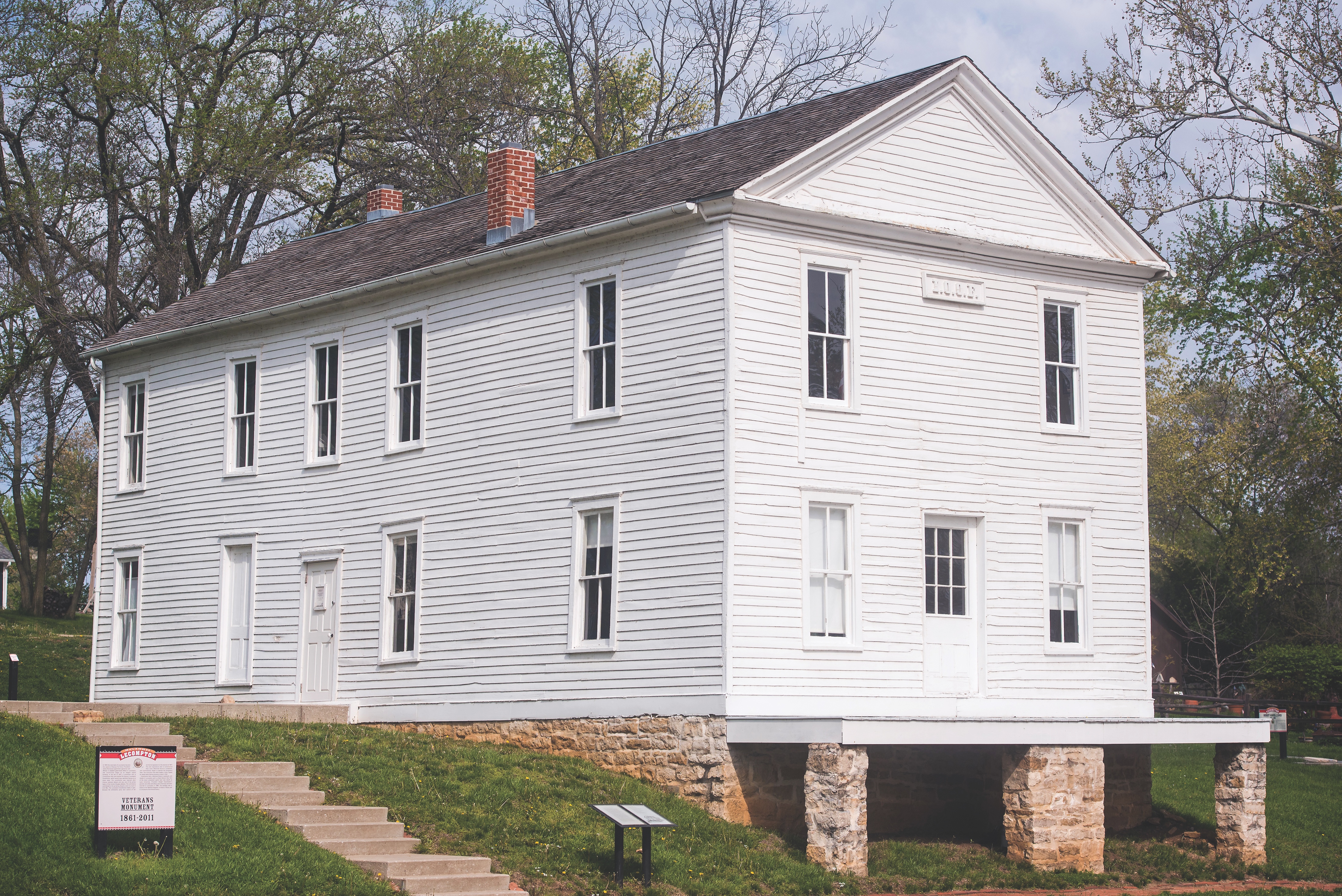
Lecompton: The Birthplace of Kansas’ Struggles
Lecompton, once the territorial capital of Kansas, played a pivotal role in the state’s turbulent history. The town was at the center of the debate over slavery in the territories, with both pro-slavery and anti-slavery factions vying for control. The Lecompton Constitutional Hall is one of the most significant historical sites in Kansas, as it was the site where the pro-slavery constitution was drafted in 1857. The building now serves as a museum, offering insight into the political and social struggles that led to the Civil War. Lecompton is a quiet town today, but its role in Kansas history is crucial, and it offers an authentic look at the frontier’s political turmoil. The Lecompton Historical Society is dedicated to the preservation and interpretation of Historic Lecompton’s museums, historic sites and National Landmarks.
Topeka: The Heart of Kansas’ Wild West Legacy
As the state capital, Topeka played a key role in Kansas’ transformation from a lawless frontier to a settled state. The Kansas State Capitol Building stands as a reminder of the state’s political history, while the Brown v. Board of Education National Historic Site commemorates the landmark Supreme Court decision that ended racial segregation in public schools. Topeka was also a major stop on the Santa Fe Trail, and the Old Prairie Town at Ward-Meade Historic Site offers a glimpse into the lives of early Kansas settlers. Topeka’s mix of political, cultural and frontier history makes it an essential stop for anyone exploring the Wild West heritage of Kansas.
– MONTANA-
The Sky’s the Limit Exploring the Wild West Legacy of the Treasure State
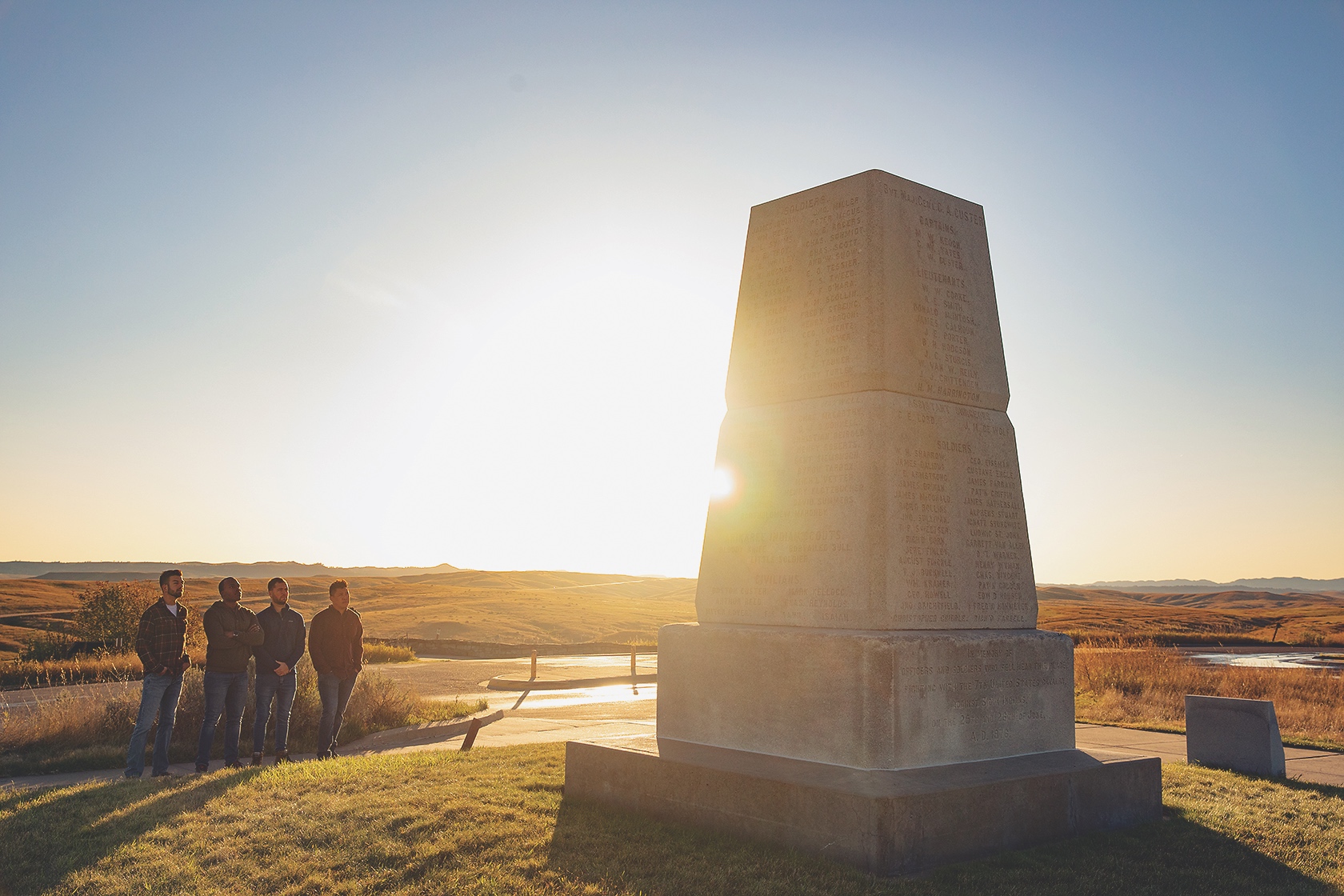
Montana—where the rugged peaks of the Rocky Mountains meet the vast, open plains—is a land of vast horizons, dramatic history and untold stories. From the gold rush days to the legacy of cattle ranchers, lawmen and outlaws, Montana offers a rich tapestry of Wild West history. Whether you’re following the footsteps of the notorious outlaws who once roamed the state or soaking in the landscapes that inspired iconic Western films, Montana is a place where history and adventure converge. Known for its wide-open spaces, big skies and legendary figures, the state remains a treasure trove of frontier lore. Here’s a guide to some of Montana’s most historic towns, where the spirit of the Wild West still runs free.
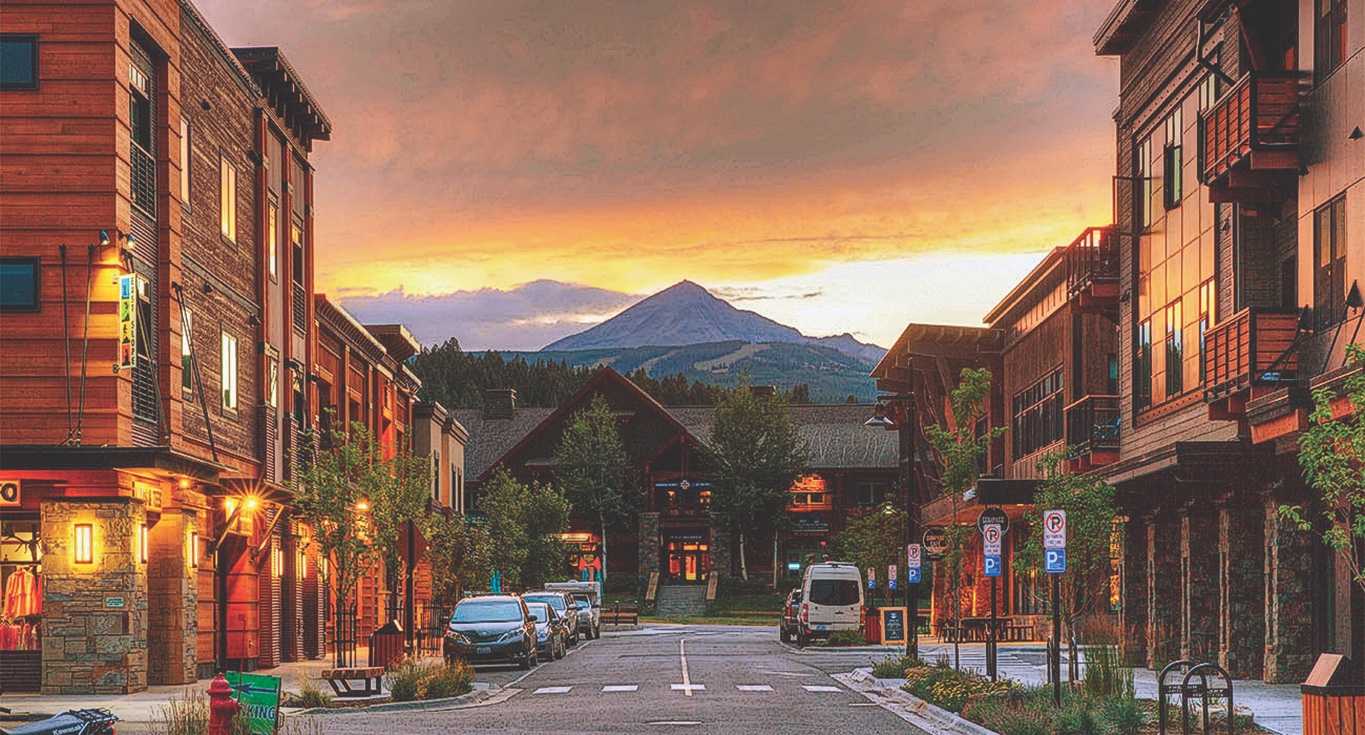
Big Sky: The Gateway to Adventure
Big Sky, located in the heart of Montana’s mountainous wilderness, is more than just a world-class ski destination; it’s also a place rich with frontier history. While Big Sky itself is a modern resort town, the surrounding area was once home to fur trappers, Native American tribes and early pioneers. Today, visitors can explore the history of the region at the nearby Museum of the Rockies in Bozeman or head to Lewis and Clark Caverns State Park to learn about the famous explorers who passed through the area. While Big Sky is best known for outdoor adventure, from hiking to skiing, the landscape itself evokes the feeling of the Wild West, where the untamed beauty of Montana’s mountains still dominates the horizon.

Billings: The Cowboy Crossroads
As the largest city in Montana, Billings serves as the gateway to the Yellowstone Valley and the kick-off point for a visit to the Little Bighorn Battlefield National Monument. Known as the “City of Cowboys and Culture,” Billings was founded in 1877 as a railroad town and grew rapidly as a cattle and agricultural hub. The Yellowstone County Museum provides a fascinating look at the region’s history, including exhibits on Native American culture, early pioneers and the rise of the railroad, and the Yellowstone Art Museum connects the contemporary past and present by preserving and exhibiting art. Visit the Moss Mansion Museum, a turn-of-the century home designed by New York architect Henry Janeway Hardenbergh as well as Billing’s Boot Hill Cemetery. To satisfy your appetite for the Wild West, a visit to Pioneer Park will offer a glimpse of Billings’ early days and the people who helped shape its development.
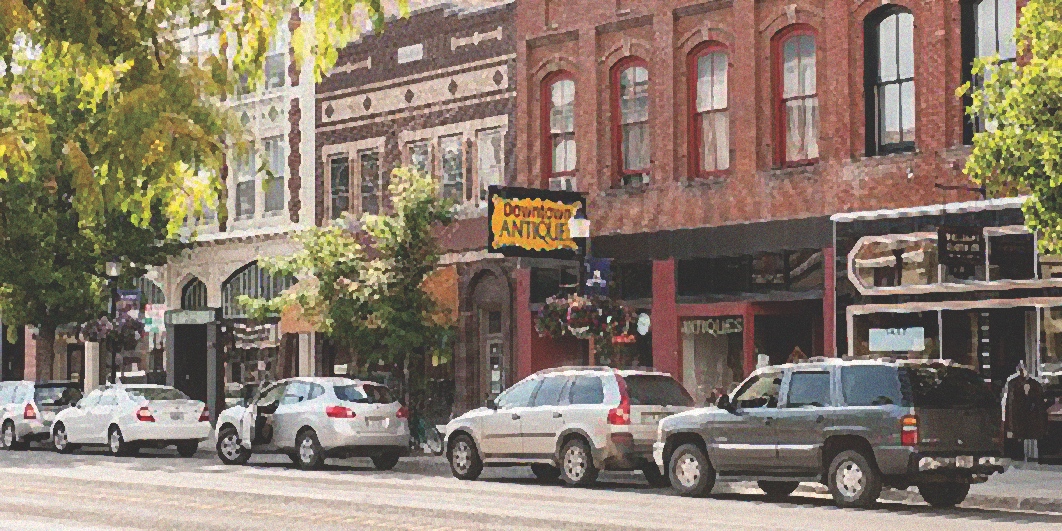
Bozeman: Where Gold Rush Meets Adventure
Bozeman is a vibrant college town and gateway to Yellowstone National Park, but its history is deeply intertwined with the gold rush of the mid-1800s. In 1864, John Bozeman, a pioneer from Georgia, blazed the Bozeman Trail, which was used by settlers heading west to find gold in the Montana Territory. The Museum of the Rockies offers extensive exhibits on this period of history, including a fascinating collection of Native American artifacts and dinosaur fossils, and the Gallatin History Museum offers a unique glimpse into the area’s past. Bozeman’s historic downtown is filled with Victorian architecture, and it’s easy to imagine what life was like during the gold rush days. The Bridger Bowl ski area nearby also provides a scenic backdrop to the area’s historical significance, offering modern adventure amid Montana’s Wild West legacy.
Deer Lodge: A Glimpse of Old Montana
Deer Lodge, once a center of the region’s mining and ranching industries, provides a rare glimpse into Montana’s past. The Old Montana Prison complex in Deer Lodge is one of the most visited sites in the state, offering guided tours of the historic penitentiary, which housed infamous criminals like Harry “The Kid” Hill. The Grant- Kohrs Ranch National Historic Site, another key destination, tells the story of the American cattle ranching industry, which played a major role in shaping Montana’s economy. Deer Lodge’s small-town charm and historical significance make it a must-visit stop for anyone interested in the state’s Wild West history.
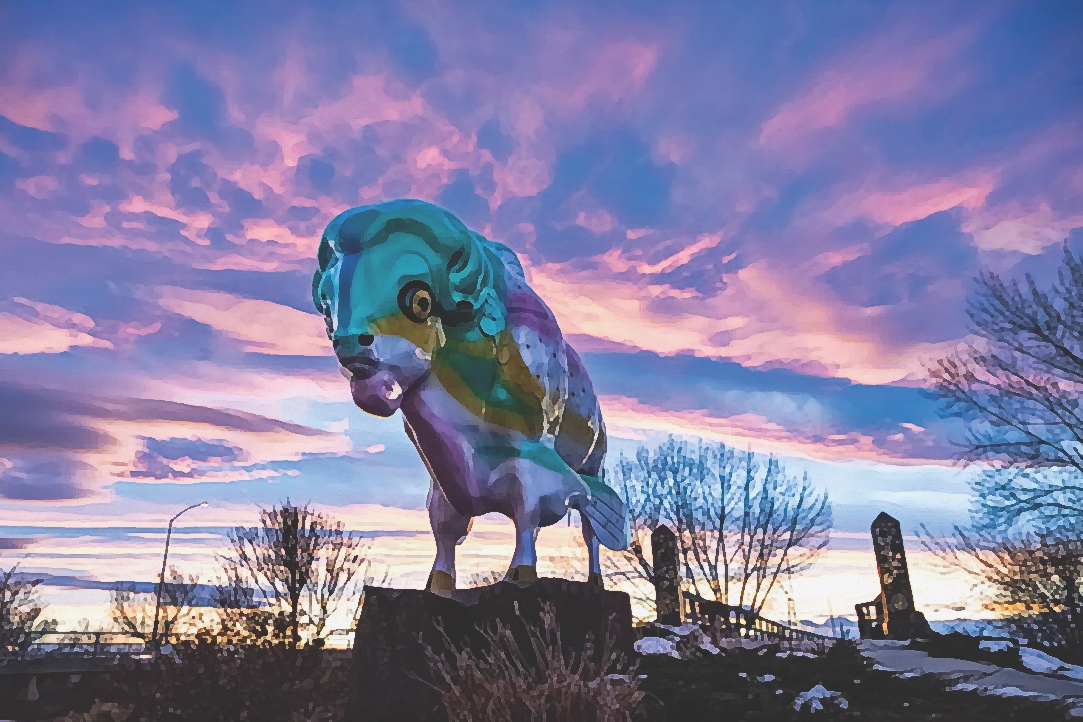
Great Falls: The Power of the West
Great Falls, named for the series of waterfalls along the Missouri River, played an essential role in the expansion of the American West. As a center for both the fur trade and the railroad, Great Falls became a critical link between the East and West. The Lewis and Clark National Historic Trail Interpretive Center provides insight into the explorers’ journey and the significance of Great Falls on their path. The C.M. Russell Museum showcases the work of the famous cowboy artist Charles Marion Russell, whose paintings captured the essence of the frontier. Great Falls is also home to the Mighty Mo, a historic locomotive that symbolizes the town’s connection to the industrial expansion of the American West. Stay at the historic Hotel Arvon and plan visits to The History Museum and Lewis & Clark Trail Alliance.
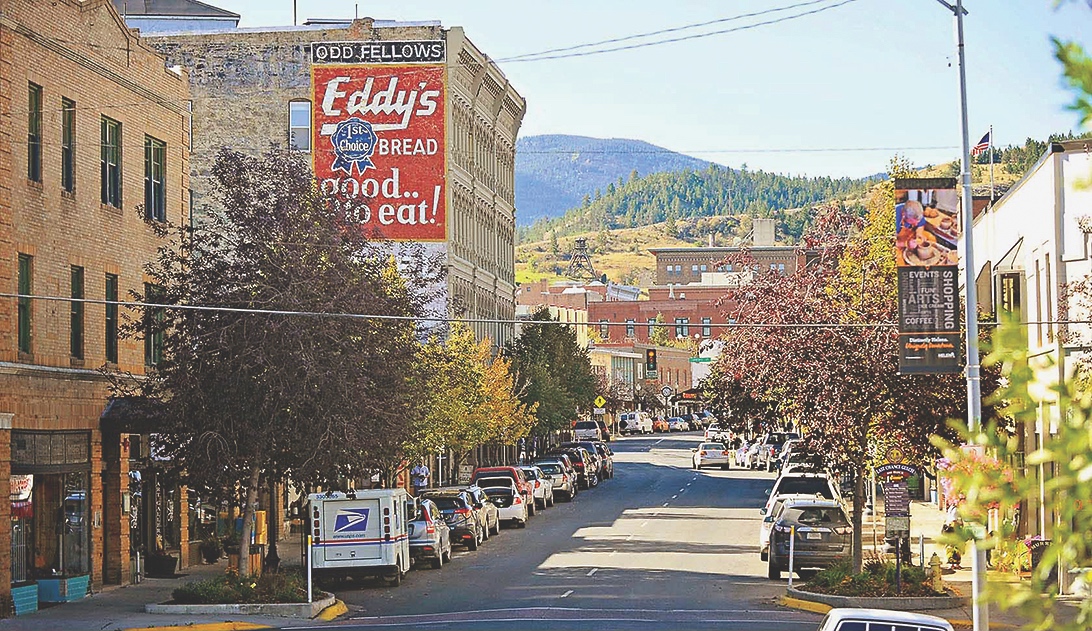
Helena: The Last Best Place
Helena, the state capital, was founded as a gold camp in 1864 and quickly grew into one of the wealthiest cities in the West. The Montana Historical Society Museum offers a comprehensive look at the city’s history, including its pivotal role in Montana’s gold rush, the rise of Helena as a political and economic hub, and its colorful cast of characters. Helena’s architecture reflects the boom years, with opulent mansions, historic churches and a vibrant downtown area. The nearby Reeder’s Alley, one of the city’s oldest preserved districts, takes visitors back in time to when Helena was the center of Montana’s mining empire. With its history, culture and natural beauty, Helena is truly one of Montana’s most iconic destinations.
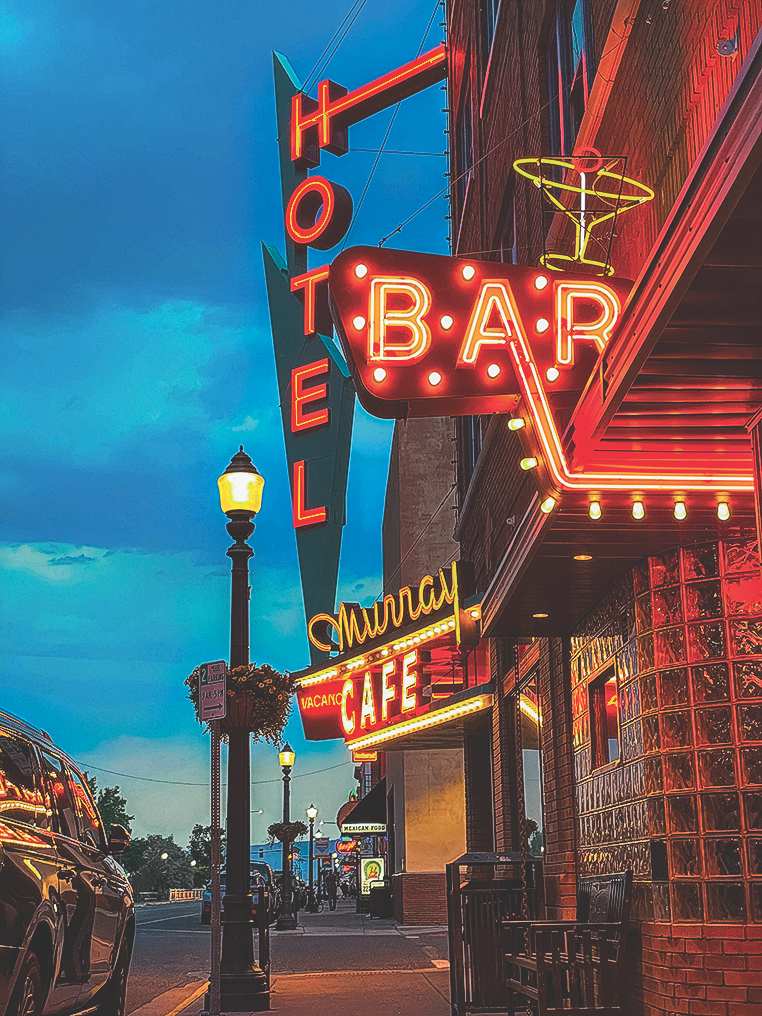
Livingston: The Gateway to Yellowstone
Livingston, once a bustling railroad town, is the historic gateway to Yellowstone National Park and offers a fascinating look at Montana’s cultural and artistic heritage and the majority of Downtown buildings are listed on the National Register of Historic Places. The Livingston Depot Center highlights the town’s history as a vital stop on the Northern Pacific Railroad, which helped open the region for settlers and tourists alike. The Yellowstone Gateway Museum provides insight into the town’s history, including its mining past and role in the development of the American West. Livingston is also home to a thriving arts scene, with numerous galleries and a rich tradition of Western art and literature. It’s a perfect blend of history and modern-day creativity, set against the backdrop of Montana’s breathtaking landscapes.
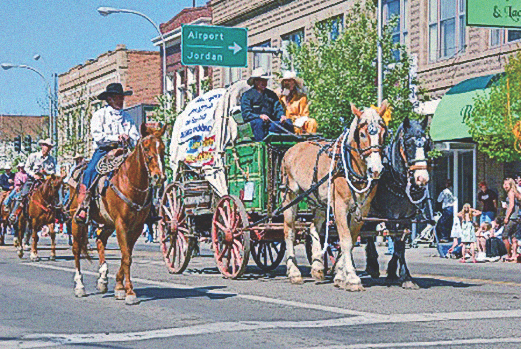
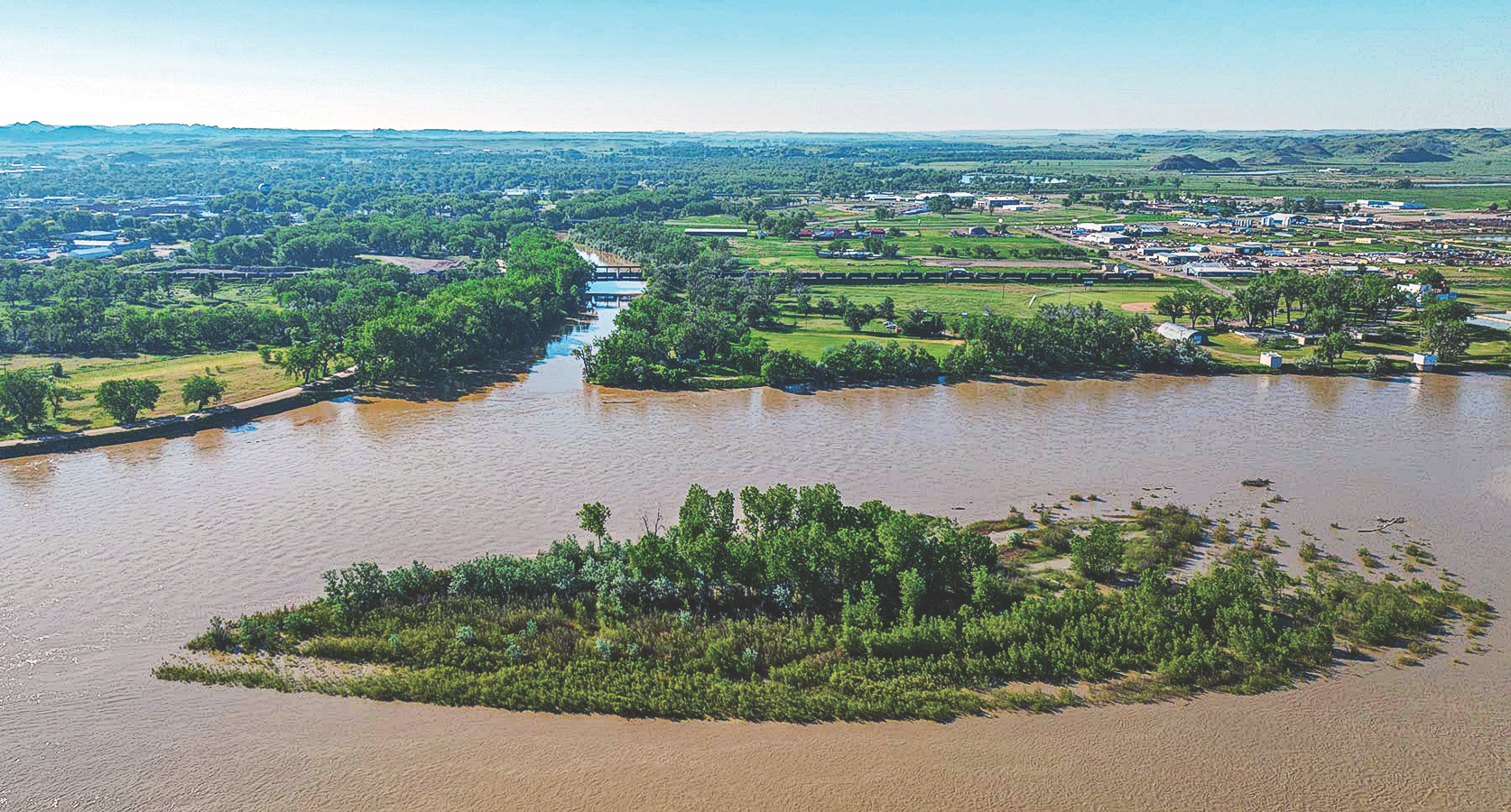
Miles City: The Cowtown of Montana
Miles City, known as the “Cow Capital of the West,” is a town deeply rooted in cattle ranching and rodeo culture. Founded in 1877 as a trading post on the Yellowstone River, Miles City grew to become a major hub for the cattle industry, and its legacy as a cow town is still visible today. The Range Riders Museum offers an in-depth look at the town’s ranching heritage, showcasing everything from cowboy gear to antique firearms. Miles City also hosts the annual Miles City Bucking Horse Sale, one of the largest rodeos in the state. With its Wild West charm and cowboys still living and working in the area, Miles City is a must-visit for anyone wanting to experience the authentic cowboy lifestyle. Grab a drink and an awesome prime rib dinner at the Historic Montana Bar in town.
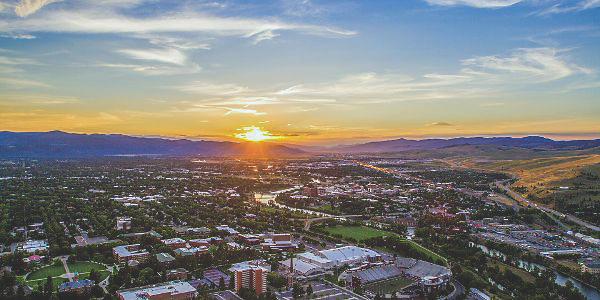
Missoula: The Heart of Western Montana
Perched along the Clark Fork River, Missoula is a vibrant town with a deep connection to the Wild West and a lively modern arts scene. Once a key hub for the railroad and timber industries, Missoula is now known for its outdoor recreation, but its history still resonates throughout the town. The Historical Museum at Fort Missoula tells the story of the town’s military past, dating back to the establishment of Fort Missoula in 1877. The Missoula Art Museum provides an ideal environment for exhibiting, celebrating and preserving its growing contemporary art collection. Nearby, the University of Montana campus features several historic buildings, and the Rocky Mountain Elk Foundation offers an exploration of the state’s wildlife heritage. Whether exploring the surrounding wilderness or strolling through the historic downtown, Missoula offers the perfect blend of natural beauty and Wild West history.
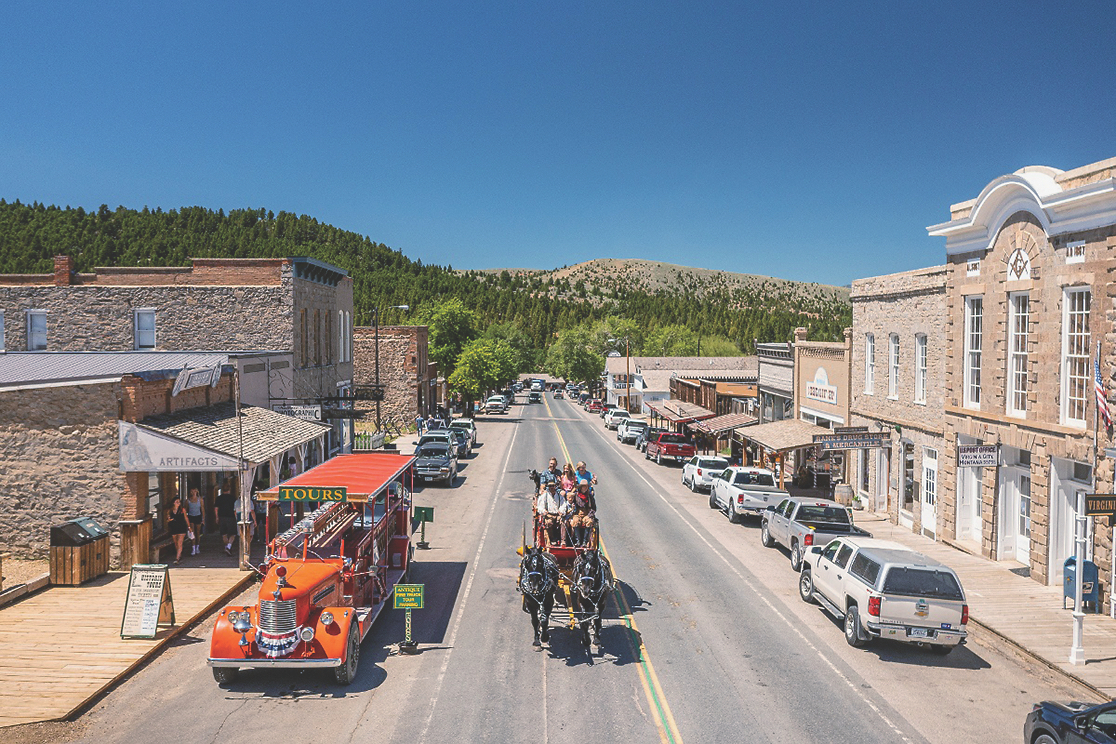
Virginia City/Nevada City: Ghost Towns and Gold Rush History
For a truly authentic glimpse into Montana’s gold rush days, Virginia City and Nevada City offer a fascinating look at life during the boom years of the 1860s. Once a bustling gold mining town, Virginia City has been beautifully preserved and offers visitors the chance to explore historic buildings, including old saloons, stores and the Old City Jail. The Virginia City Museum offers exhibits on the area’s gold mining heritage and the stories of the people who lived and worked here. Just a short distance away, Nevada City is a well-preserved ghost town, where visitors can walk through the remains of homes, shops and saloons that once catered to miners during the gold rush. Together, these towns provide an immersive experience of Montana’s frontier days, where the echoes of gold-seekers and prospectors still linger. Three important stops on your itinerary should include the Bale of Hay Saloon, Rank’s Mercantile and the Bucket of Blood Saloon.
– TEXAS-
Winding Roads and Hidden Gems a Journey through the Texas Hill Country
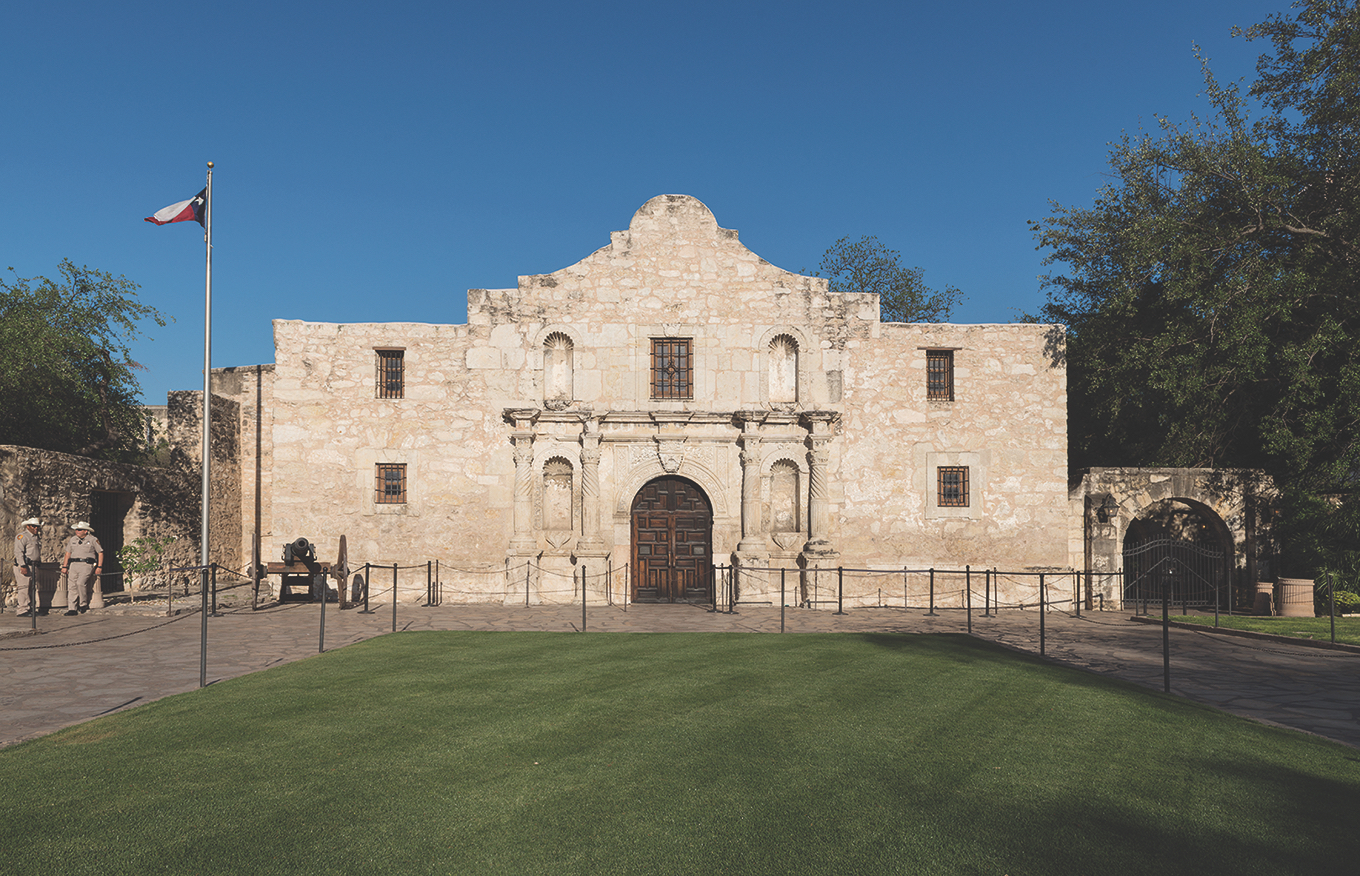
The Texas Hill Country is a land of rugged beauty, rolling hills and wide, winding roads that beckon travelers to explore its hidden gems. This region, known for its rich history, charming small towns and breathtaking natural landscapes, offers a captivating blend of cultural heritage and outdoor adventure. From the historic streets of Fredericksburg to the lively urban heart of Austin, the Hill Country provides a unique journey through the heart of Texas. Whether you’re drawn by the allure of the Wild West, the melodies of country music or the charm of German heritage, these towns reveal a Texas that’s rich in history and character. The Texas Hill Country isn’t just a place— it’s a journey that will take you back in time, and forward to moments of discovery, beauty and Texas-sized hospitality. Here’s your guide to some of the region’s most iconic towns, each with its own special story to tell.
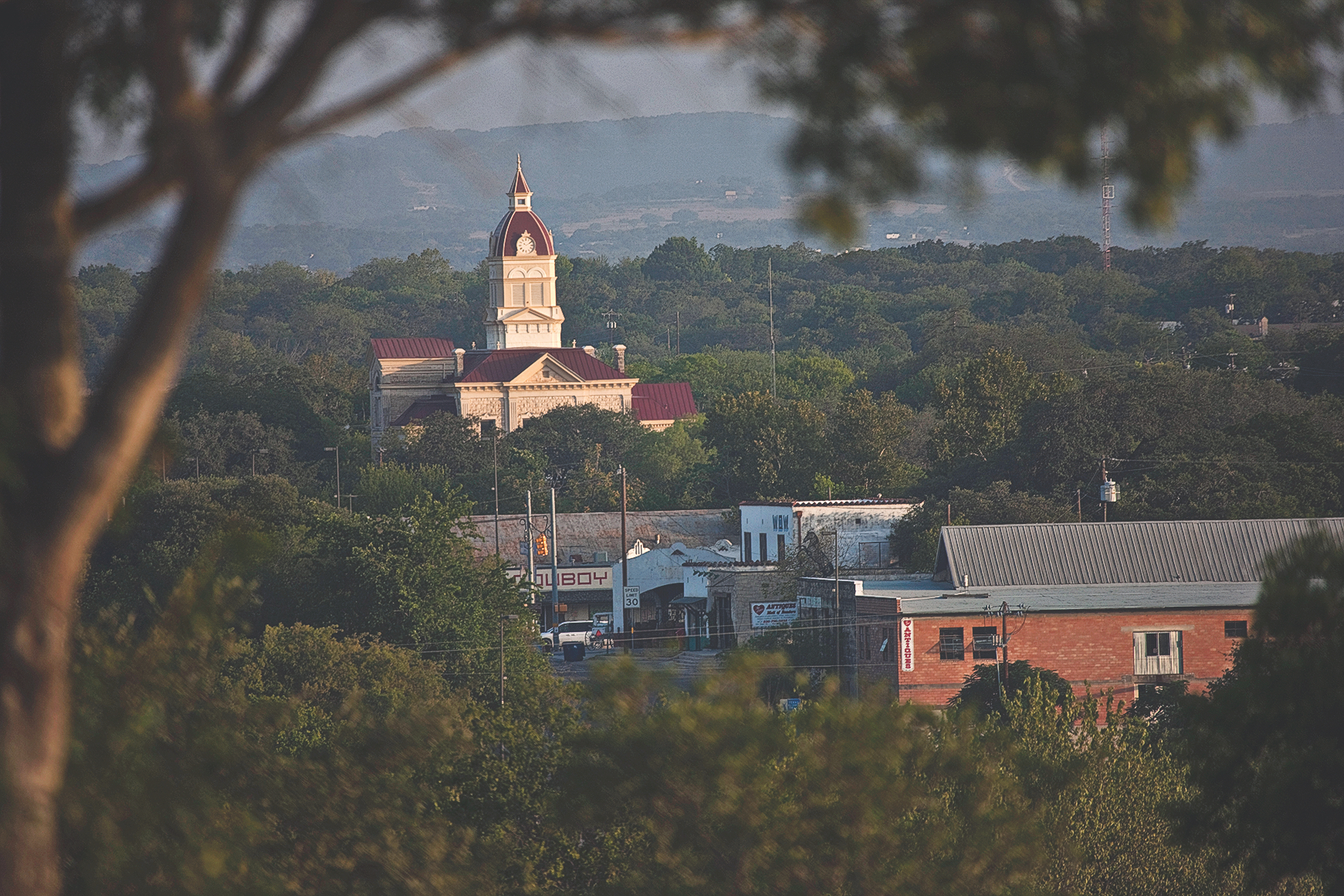
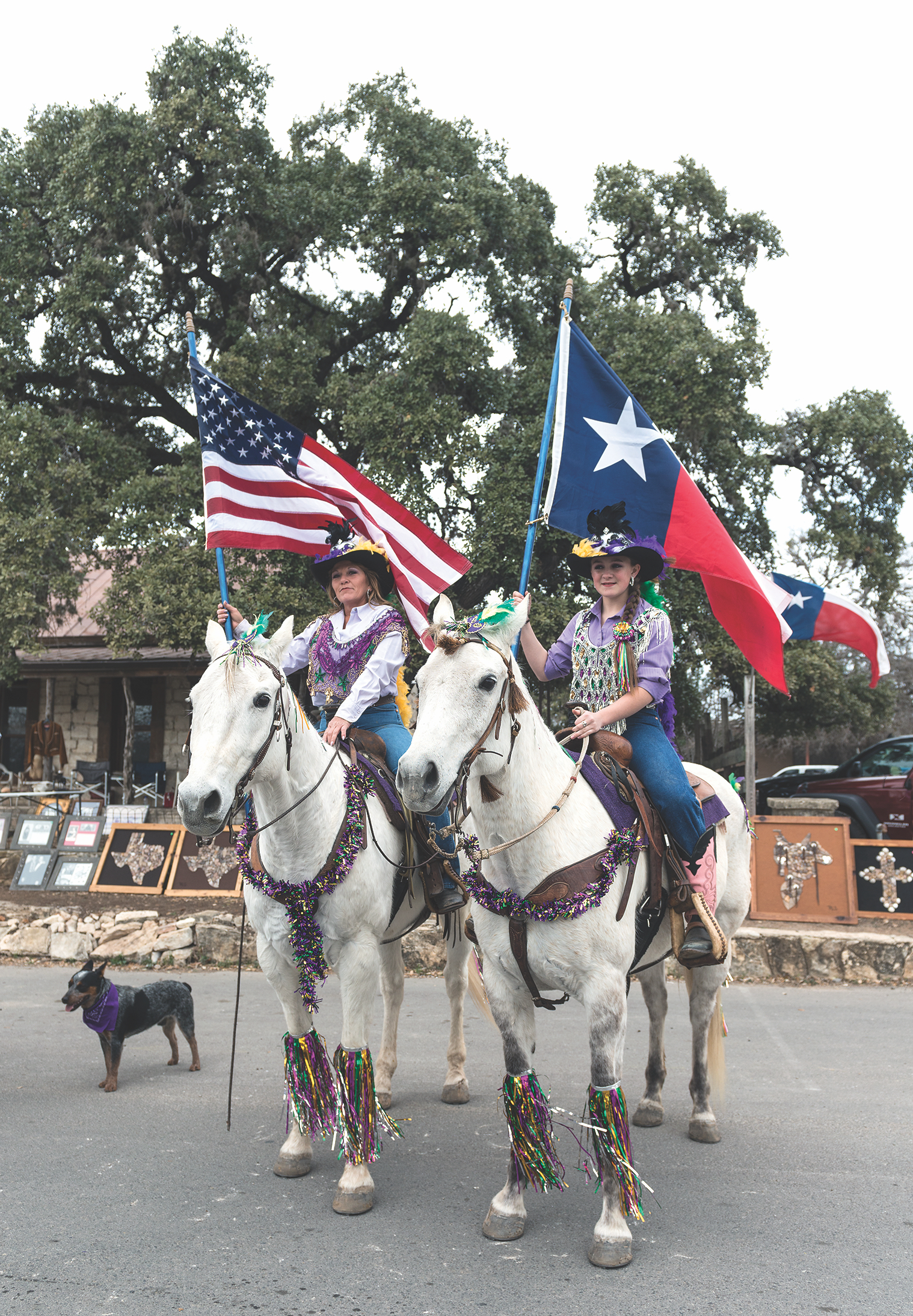
Bandera: The Cowboy Capital of the World
Bandera, often referred to as the “Cowboy Capital of the World,” is the perfect place to begin your Hill Country adventure. Positioned along the banks of the Medina River, this town has deep roots in Texas’ cowboy culture. With its Western-themed shops, lively honky-tonk bars, such as 11th Street Cowboy Bar and annual rodeos, Bandera is the epitome of small-town Texas charm. History buffs can visit the Bandera County Historical Museum, which showcases the area’s rich ranching and frontier heritage. For a true cowboy experience, head to one of the local ranches like the Mayan Dude Ranch and Twin Elm Guest Ranch that offer horseback riding and cattle drives. Bandera also hosts the Cowboy Mardi Gras, a lively celebration blending Western traditions with the spirit of the Texas Hill Country.
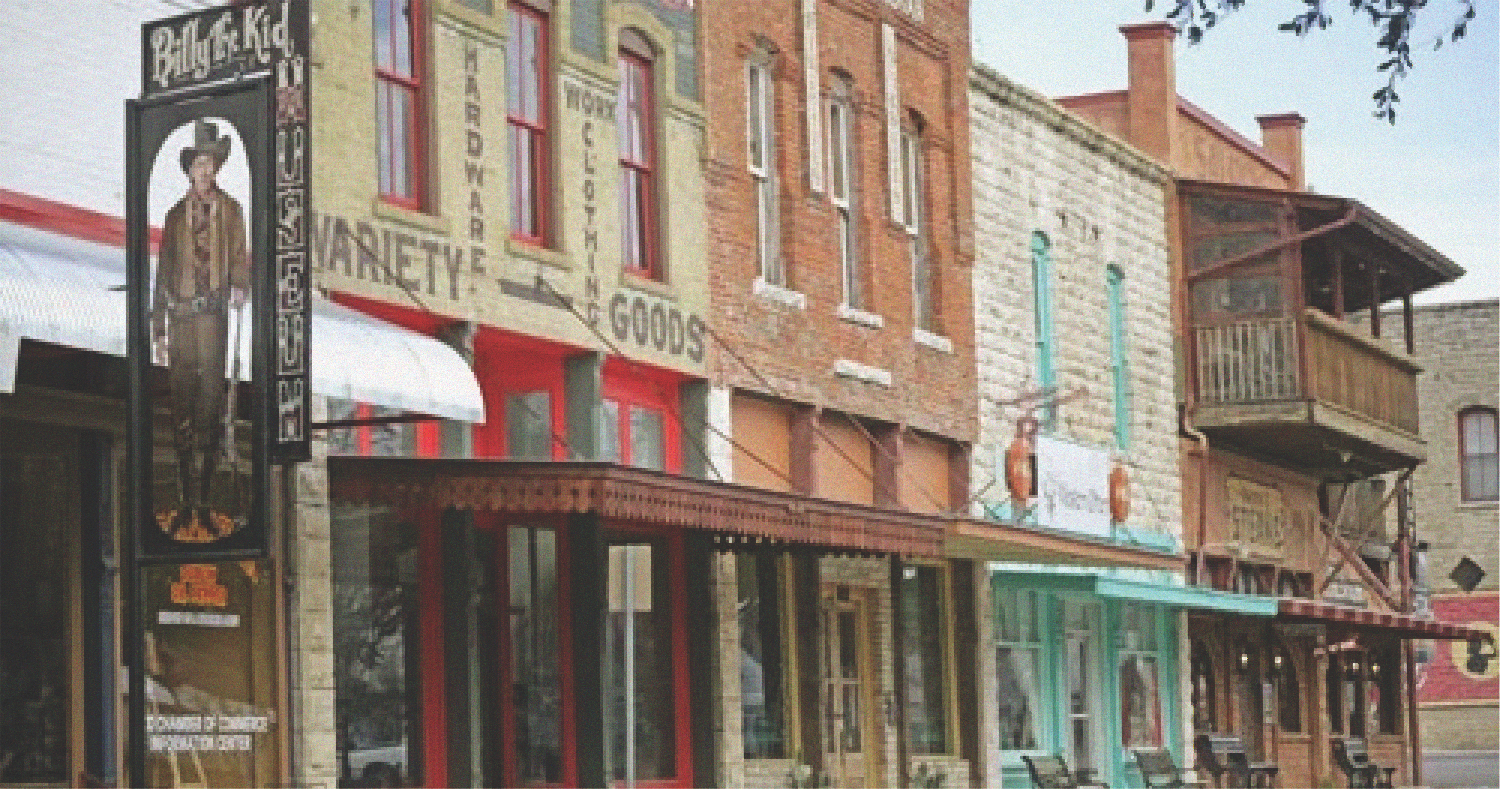
Hico: A Town of Outlaws and Legends
Hico is a small but historically significant town, which, according to local legend, has a connection to one of the most famous outlaws in American history—Billy the Kid. The town celebrates this claim at the Billy the Kid Museum and Gift Shop. While the story may be more myth than fact, the town is full of charm, with its historic buildings, quirky antique shops and excellent local restaurants. The Hico Historical Museum offers visitors a deeper look at the town’s past, which includes a thriving 19th-century mercantile economy. Hico’s peaceful streets and hidden history make it a perfect stop for history enthusiasts and curious travelers.
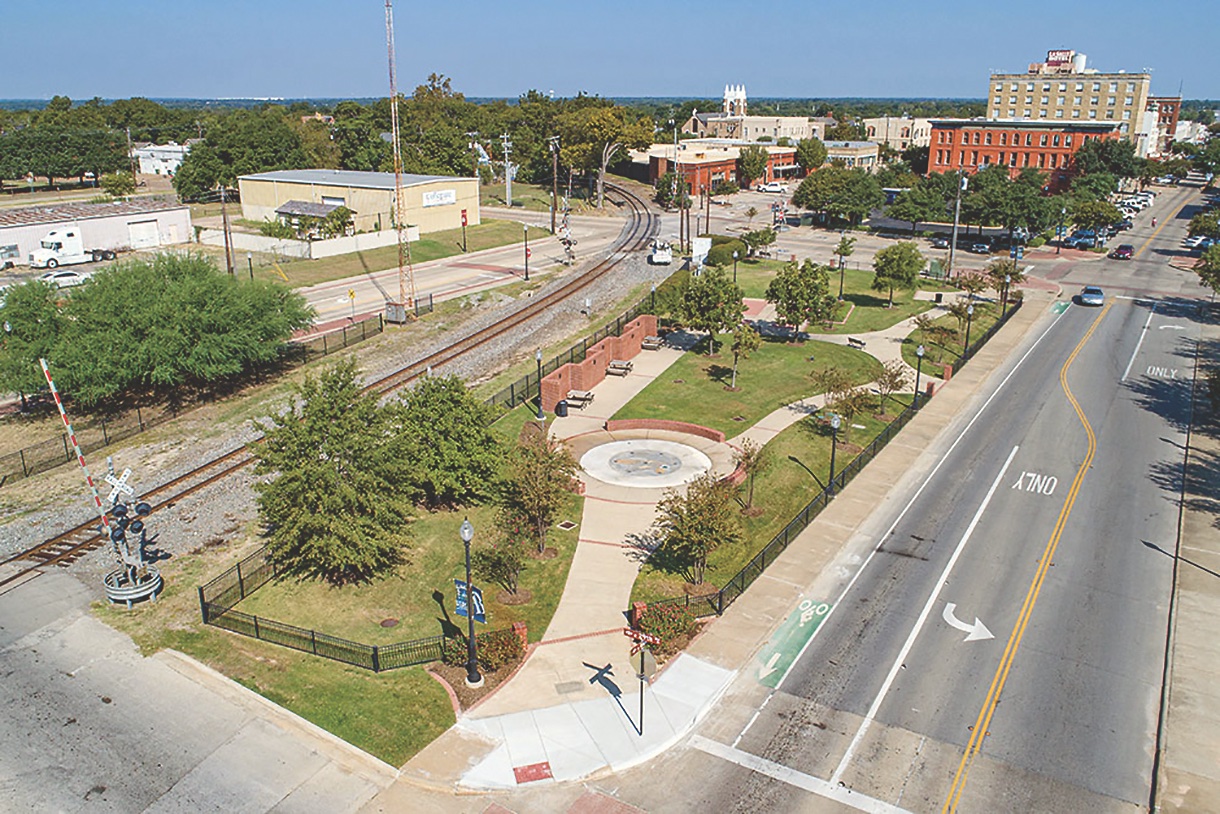
Bryan/College Station: Where History Meets Modern Texas
Located just a short drive from College Station, Bryan is a charming town with a rich history and a thriving cultural scene. Founded in the 1850s, Bryan was an important stop along the Houston and Texas Central Railway, and its historic downtown still retains much of its 19th-century architecture. The Bryan Railroad Depot and the Palace Theater are great places to start your visit. The Brazos Valley African American Museum offers insights into the region’s history, including its African American communities. Bryan’s blend of history and modern Texas life is also evident in its growing culinary and craft beer scene, making it a great destination for foodies and history lovers alike. Cowboy hat makers, Catalena Hatters, have made Bryan their home.
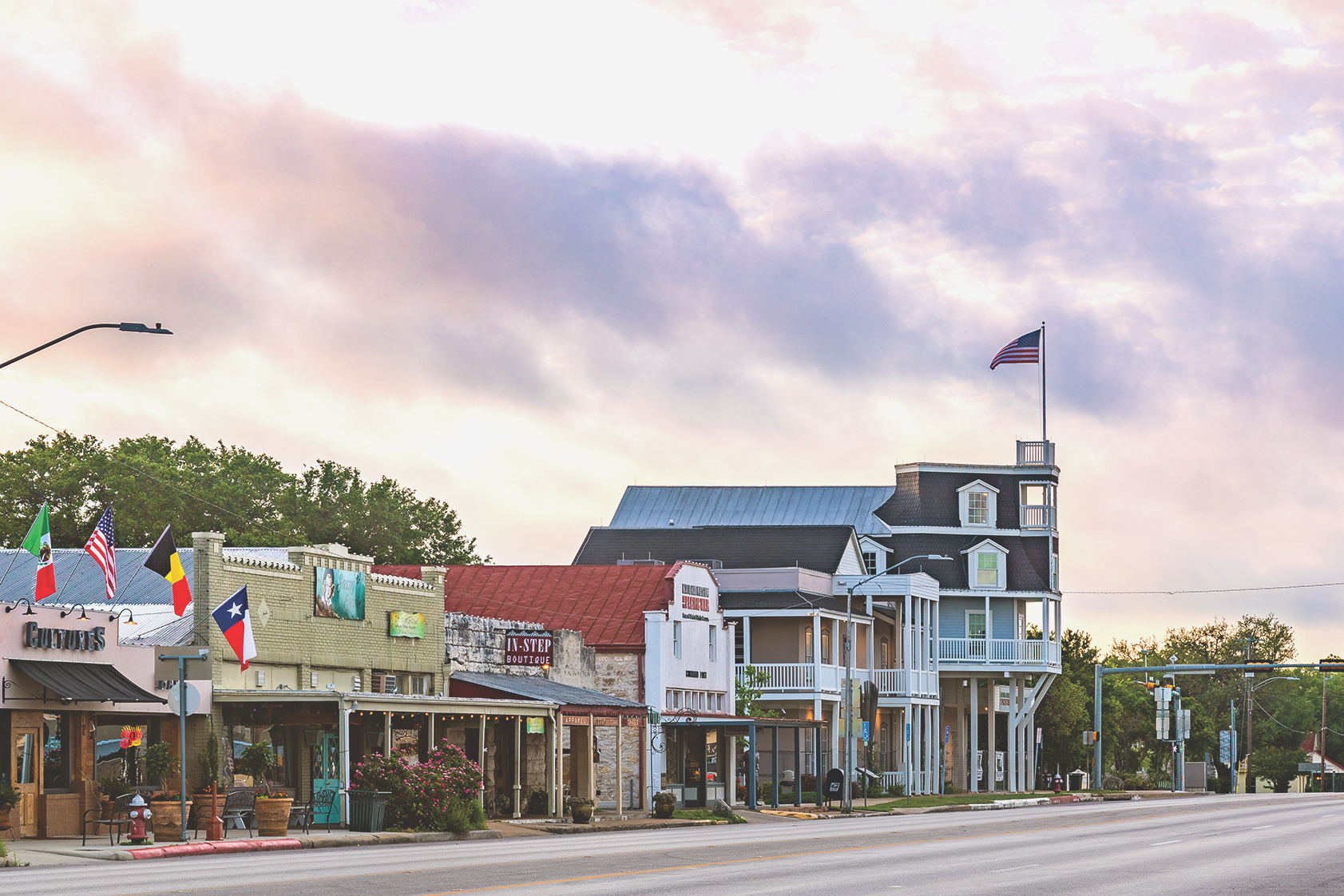
Fredericksburg: A German-American Oasis
Fredericksburg is one of the Texas Hill Country’s most iconic towns, known for its wellpreserved German heritage and vibrant wine country. Founded by German immigrants in the 1840s, Fredericksburg feels like a little piece of Germany in the heart of Texas, with its charming downtown lined with boutiques, bakeries and biergartens. A visit to the National Museum of the Pacific War is a must for history buffs. It offers an in-depth look at the region’s military history and the role of Fredericksburg native Admiral Chester W. Nimitz in World War II. The Texas Rangers Heritage Center is a must stop for Old West aficionados. Fredericksburg is also home to Cimarron Firearms and its Texas Jacks Mercantile. Some of Texas’ best wineries and vineyards are in Fredericksburg, making it a prime spot for wine tasting and leisurely exploration.
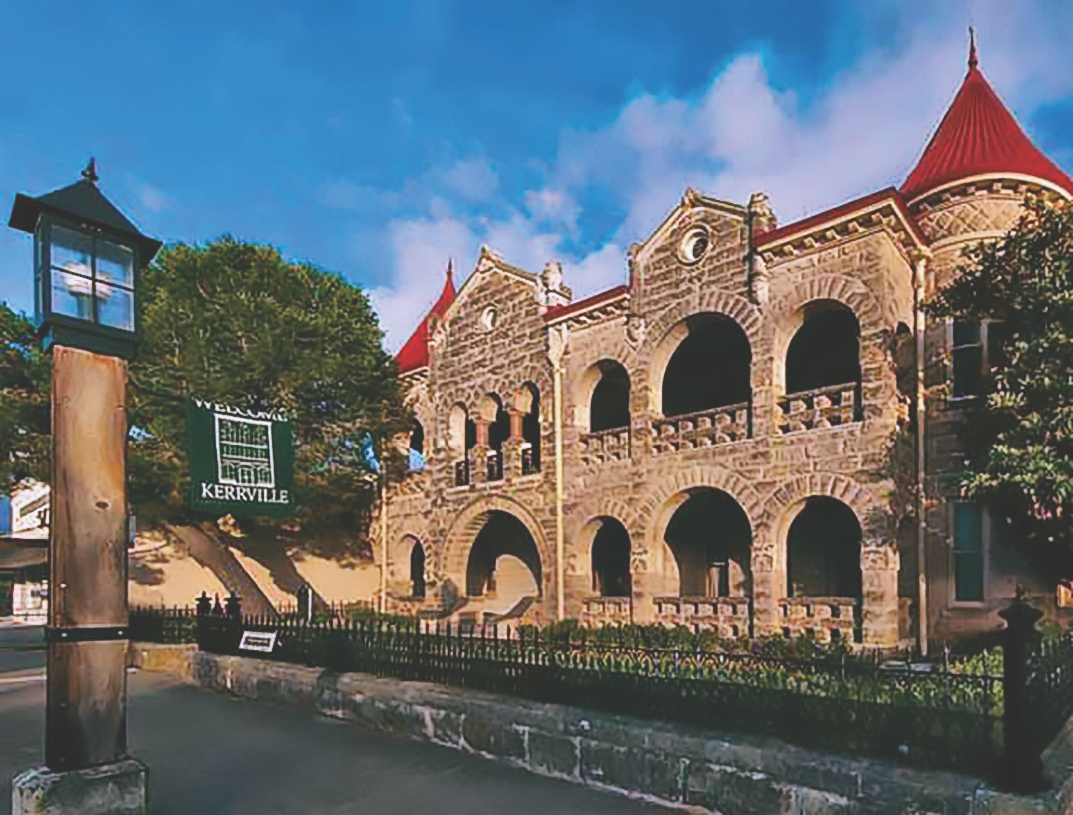
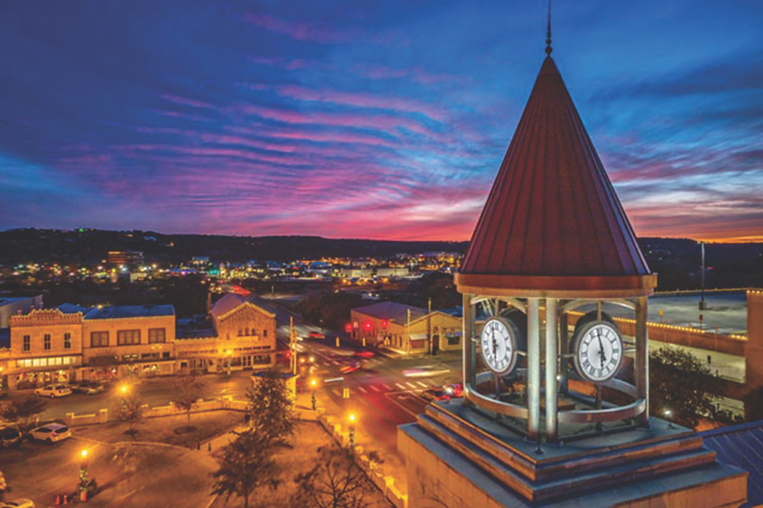
Kerrville: The Heart of the Hill Country
Settled along the Guadalupe River, Kerrville is the gateway to the scenic beauty of the Texas Hill Country. Known for its stunning natural landscapes, Kerrville is a haven for outdoor enthusiasts, offering activities like hiking, fishing and boating. The Kerrville-Schreiner Park is a popular spot for picnics and exploring the area’s flora and fauna, while the Hill Country Museum provides a window into the area’s history. Kerrville’s downtown area is filled with art galleries, local shops and cafés, giving it a vibrant yet laid-back atmosphere. The town also hosts the Kerrville Folk Festival, which celebrates the state’s rich musical heritage, especially country and folk music. The Museum of Western Art is dedicated to excellence in the collection, preservation and promotion of Western heritage and it’s well worth a visit.
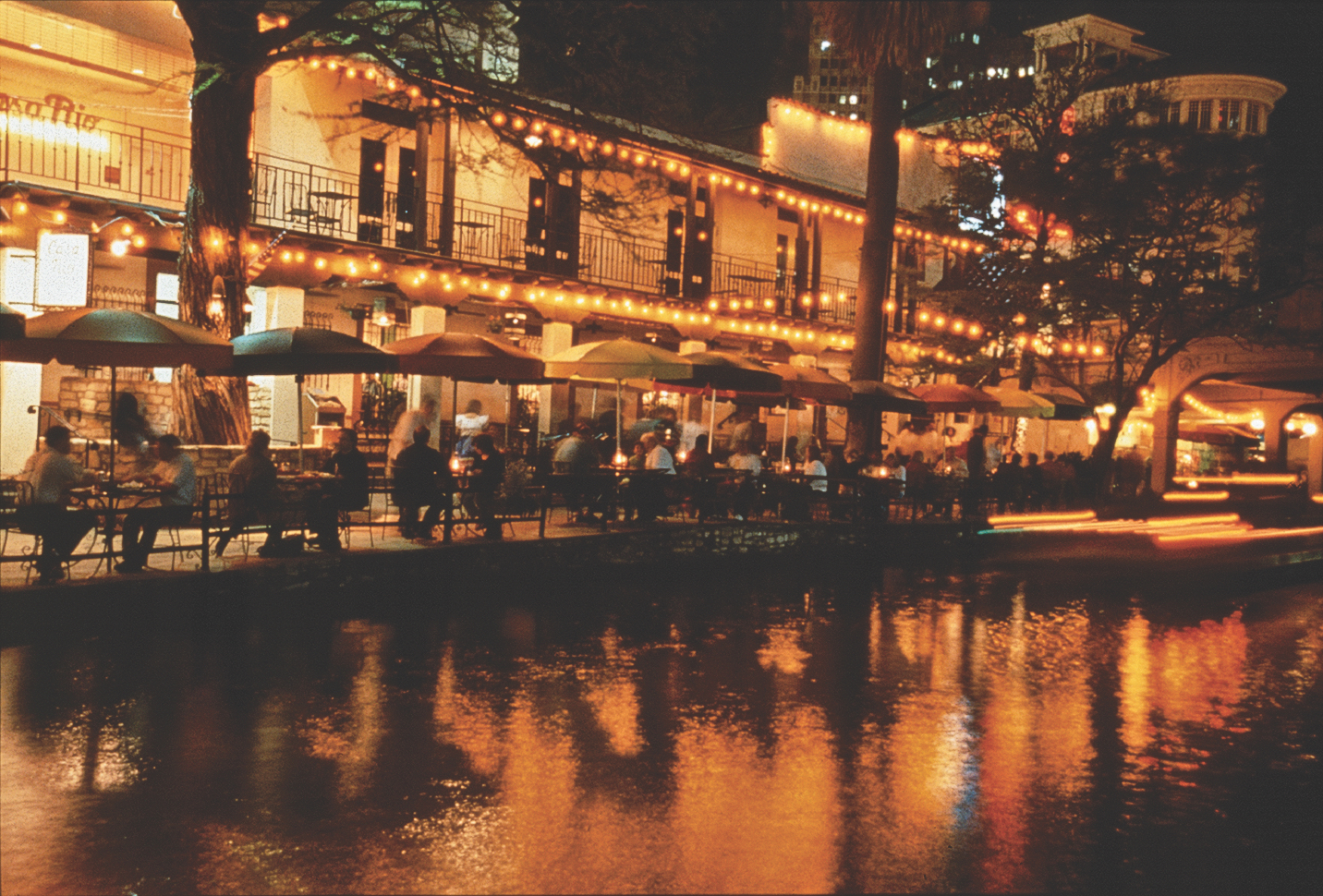
San Antonio: The Cultural Capital of Texas
San Antonio, the second-largest city in Texas, is a vibrant metropolis that blends rich history with modern amenities. Known for its historic sites like the Alamo and the San Antonio Missions National Historical Park, the city offers a deep dive into Texas’ colonial and revolutionary past. The River Walk is a must-see; its picturesque pathways along the San Antonio River are lined with shops, restaurants and bars. San Antonio is also home to a thriving arts and culture scene, with museums including the Briscoe Western Art Museum, The Alamo Museum, San Antonio Museum of Art and the McNay Art Museum. With its unique blend of Mexican and Texan cultures, San Antonio is a place where history and modern life converge in exciting and unexpected ways.
Austin: Live Music and Lone Star Spirit
Austin, Texas’ state capital, is known for its eclectic energy, live music scene and vibrant cultural landscape. Famous for its motto, “Keep Austin Weird,” the city is a hub of creativity, arts and innovation. A tour of the Texas State Capitol offers a glimpse into the state’s political history, while the Bullock Texas State History Museum takes visitors through the state’s fascinating past, from Native American history to its time as a republic. Austin is also the live music capital of the world, with legendary venues like The Continental Club and Antone’s hosting performances almost every night. Whether you’re into the arts, history or great food, Austin’s dynamic spirit offers something for every type of traveler.
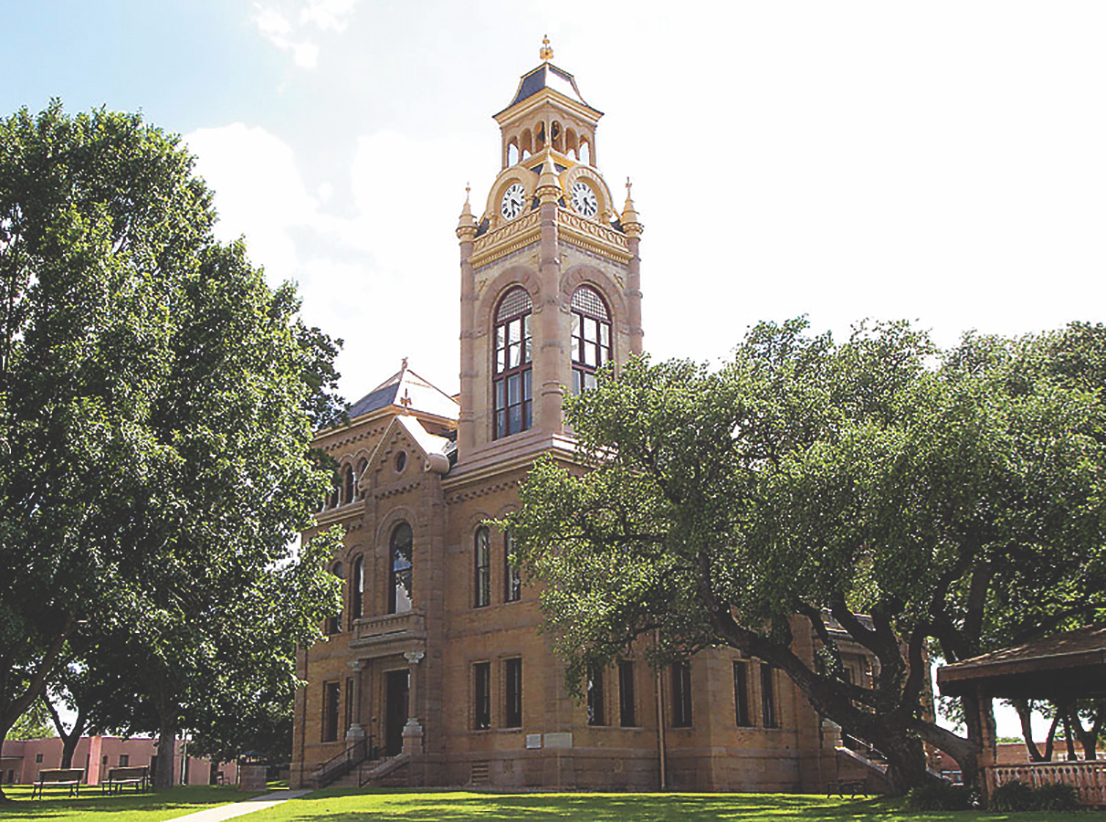
Llano: A Texas Hill Country Gem
Llano, located along the Llano River, is known for its natural beauty, historic downtown and delicious barbecue. The town was established in the 1850s and has since maintained its small-town charm, with local shops, art galleries and eateries lining the streets. Llano County Historical Museum gives insight into the area’s past, including its role in the cattle industry and its history as a frontier settlement. Llano is also famous for its outdoor activities, especially fishing, with the Llano River offering some of the best bass fishing in the state. For foodies, Llano is known for its topnotch barbecue, with Cooper’s Old Time Pit Bar-B-Que being a local favorite.
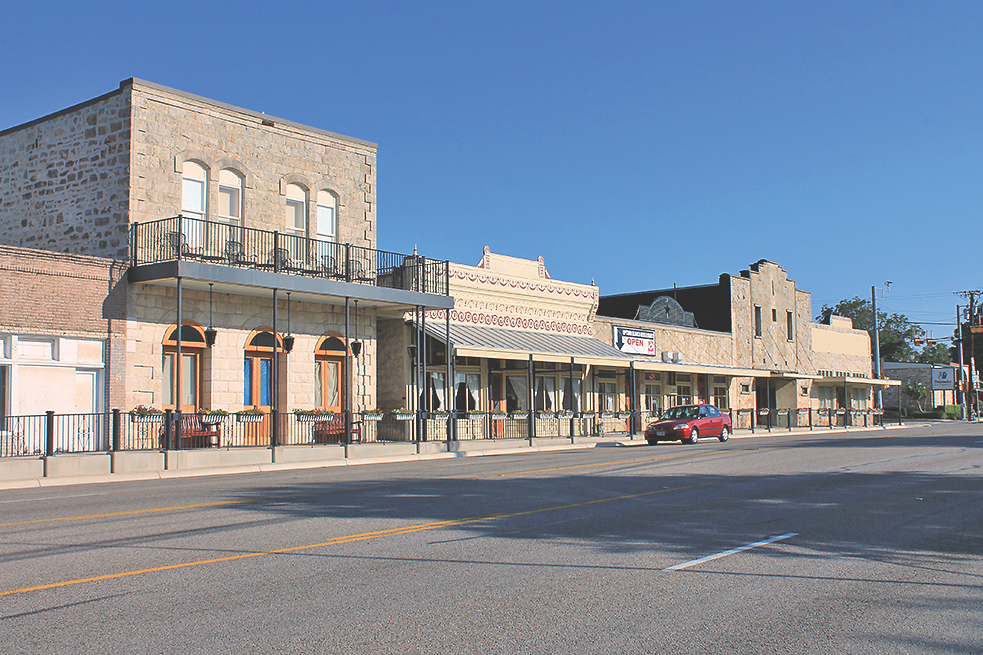
Blanco: A Quaint Town with a Rich History
Blanco, a picturesque town along the banks of the Blanco River, offers a peaceful retreat with a deep history rooted in Native American and early settler cultures. The Blanco State Park is a favorite for camping, swimming and fishing, while the Blanco County Historical Museum showcases the town’s agricultural roots and historical landmarks. The Blanco Courthouse, built in the 1880s, is a beautiful example of Texas’ post-Civil War architecture and adds to the town’s historical charm. With its friendly atmosphere and scenic beauty, Blanco is a perfect place to relax and enjoy the slower pace of Hill Country life.
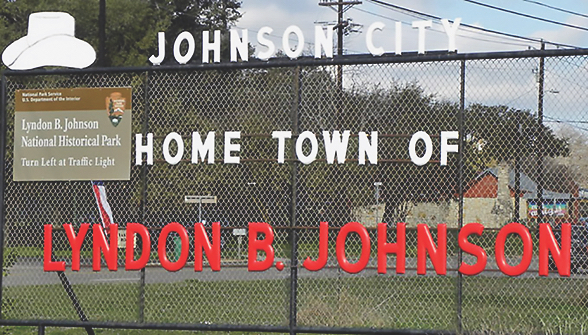
Johnson City: The Home of President Lyndon B. Johnson
Johnson City is a charming small town known as the birthplace of President Lyndon B. Johnson and offers a glimpse into the life of the 36th President of the United States. The Lyndon B. Johnson National Historical Park is the main attraction, including the LBJ Ranch (also known as the “Texas White House”), where President Johnson spent many weekends and holidays. Visitors can tour the ranch and learn about Johnson’s impact on both Texas and the nation. The town’s historic district, with its restored 19th-century buildings, offers a quaint setting for shopping, dining, and exploring. Johnson City’s small-town charm and rich connection to American history make it a must-visit stop in the Hill Country.
– WYOMING-
Legends of the Wild West a Journey through Wyoming’s Historic Towns
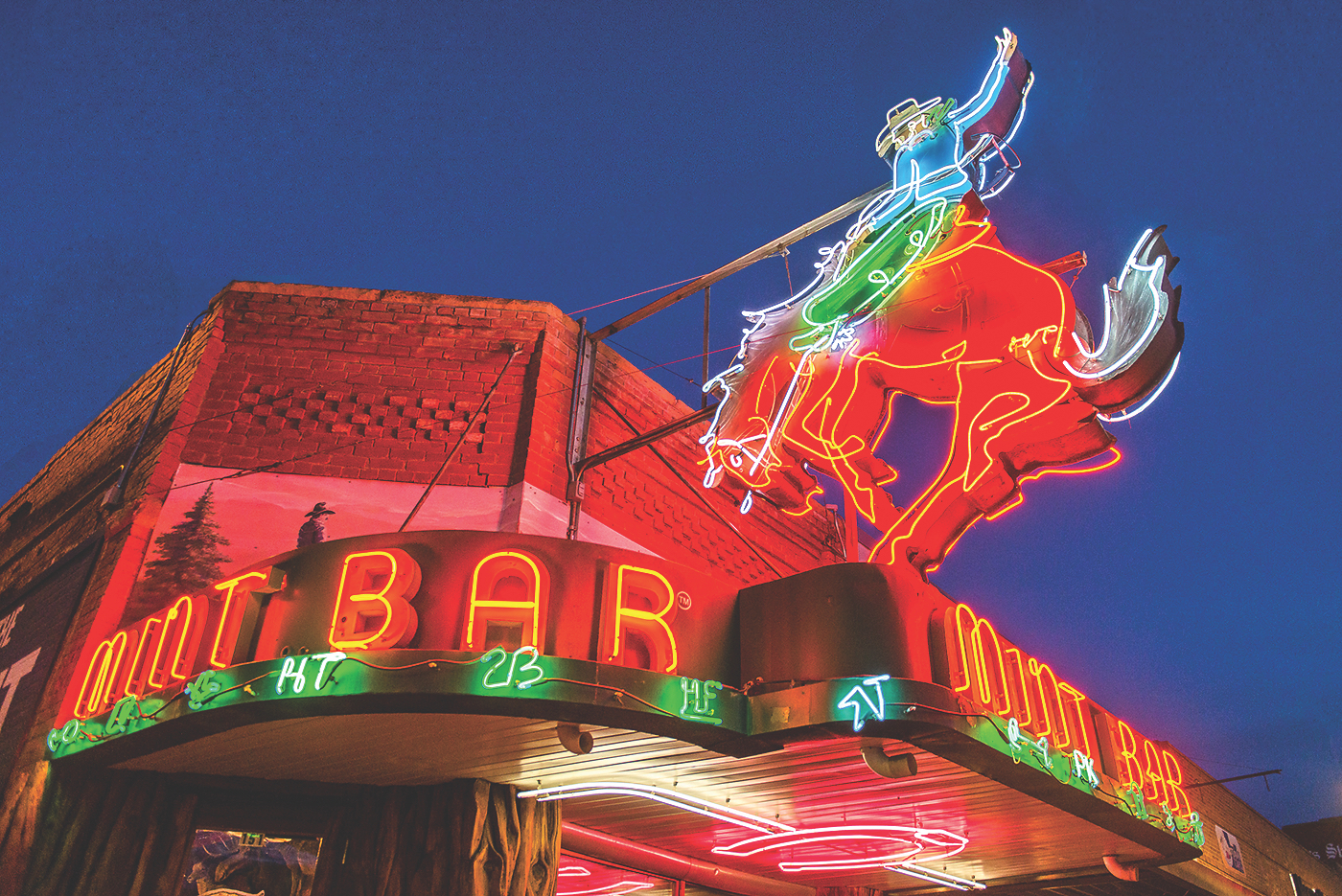
Wyoming’s vast, rugged landscapes echo with the spirit of the Wild West, where frontier towns once bustled with cowboys, outlaws and pioneers carving out a place in the American story. Today, these towns stand as living museums to a time when the lawless and the legendary roamed the land. For travelers looking to walk in the footsteps of legends, Wyoming offers a road trip like no other—one that traces the lives of the famous and infamous, from Buffalo Bill Cody to Butch Cassidy and the Sundance Kid. Each stop brings a fresh chapter in the unfinished story of America’s frontier past. Here’s your guide to exploring the historical heart of Wyoming, where the Old West meets modern-day adventure.
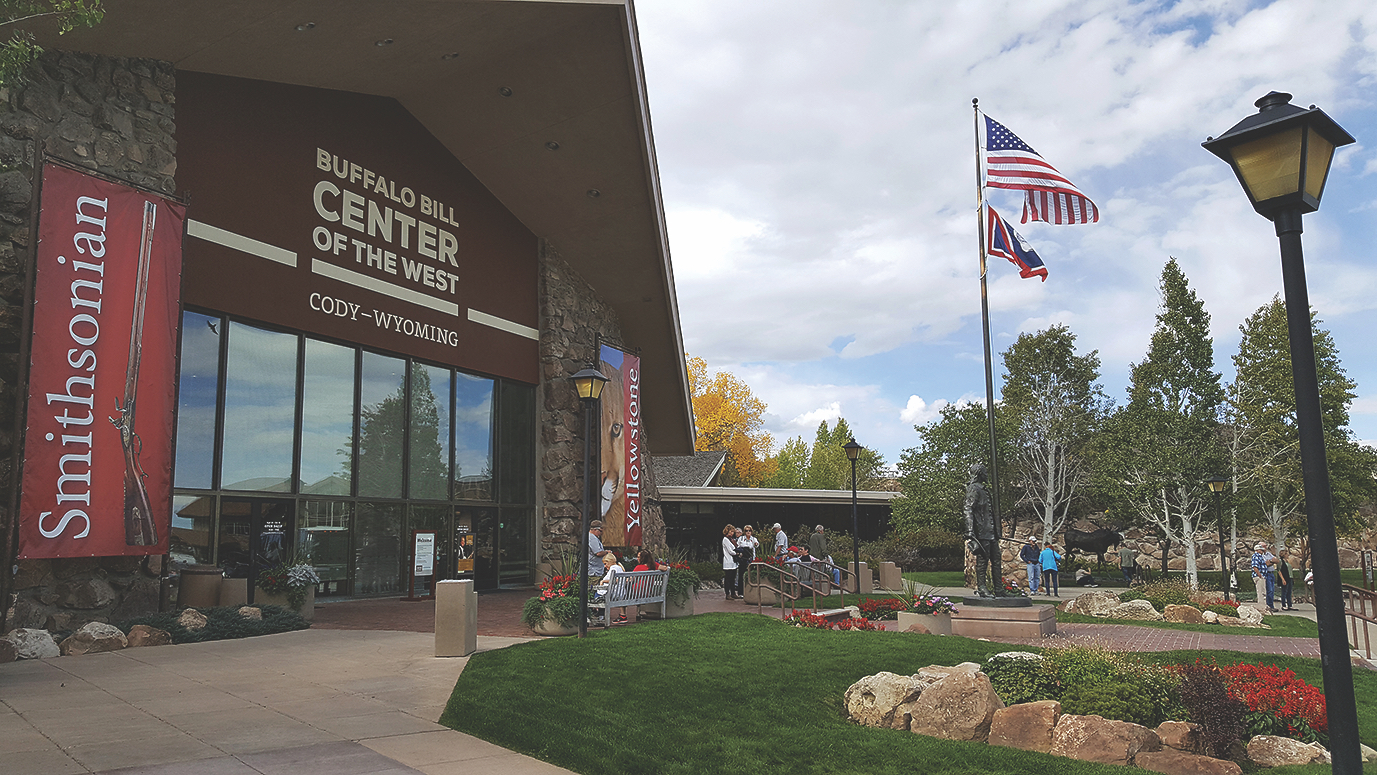
Cody: The Legacy of Buffalo Bill
Named after the iconic William “Buffalo Bill” Cody, this town is a tribute to the man who helped shape the myth of the Wild West. At the Buffalo Bill Center of the West, visitors can explore worldclass exhibits on Cody’s life, his role in popularizing the American frontier, and his showmanship in the legendary Buffalo Bill’s Wild West performances. The center also delves into Native American history and houses the most comprehensive collection of American firearms in the world. Stop by the Old Trail Town and Museum of the Old West and don’t miss the opportunity to walk the grounds of the Cody Trolley Tour, which stops at historic landmarks including the Irma Hotel, built by Buffalo Bill himself, where he entertained famous guests like Theodore Roosevelt. Cody is also home to the Dude Rancher’s Association, if you’re looking to book or learn more about a guest ranch excursion.
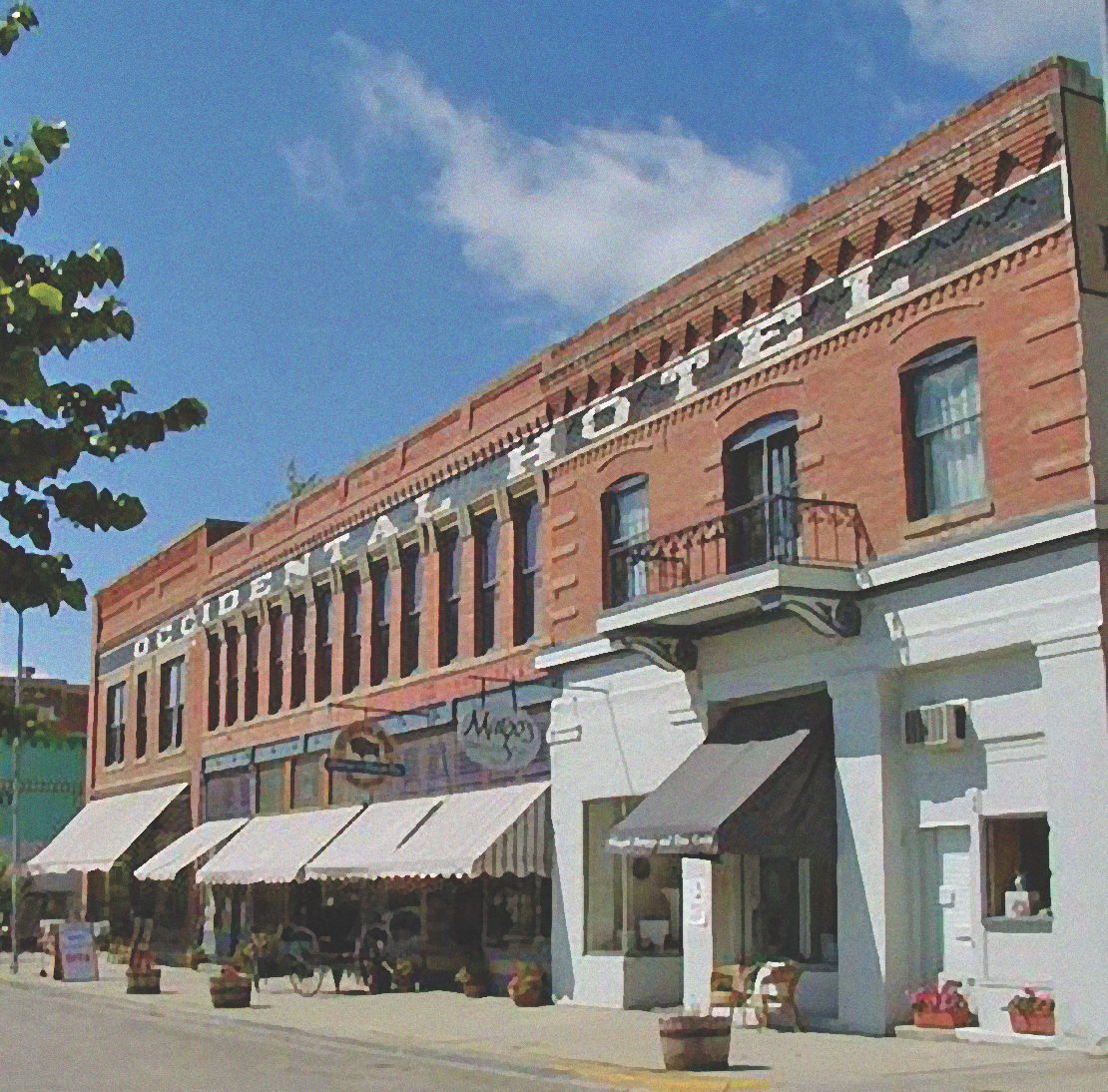
Buffalo: A Historic Crossroads
Nestled between the Bighorn Mountains and the plains, Buffalo is a picturesque town steeped in the history of the American frontier. It was a critical stop on the Bozeman Trail during the Indian Wars and saw its share of skirmishes. The historic Occidental Hotel and Saloon, built in the 1880s, was frequented by famous figures including Butch Cassidy and Calamity Jane. Nearby, the renowned Jim Gatchell Memorial Museum offers a deep dive into local history, including Native American culture, frontier military life and the region’s most storied characters.
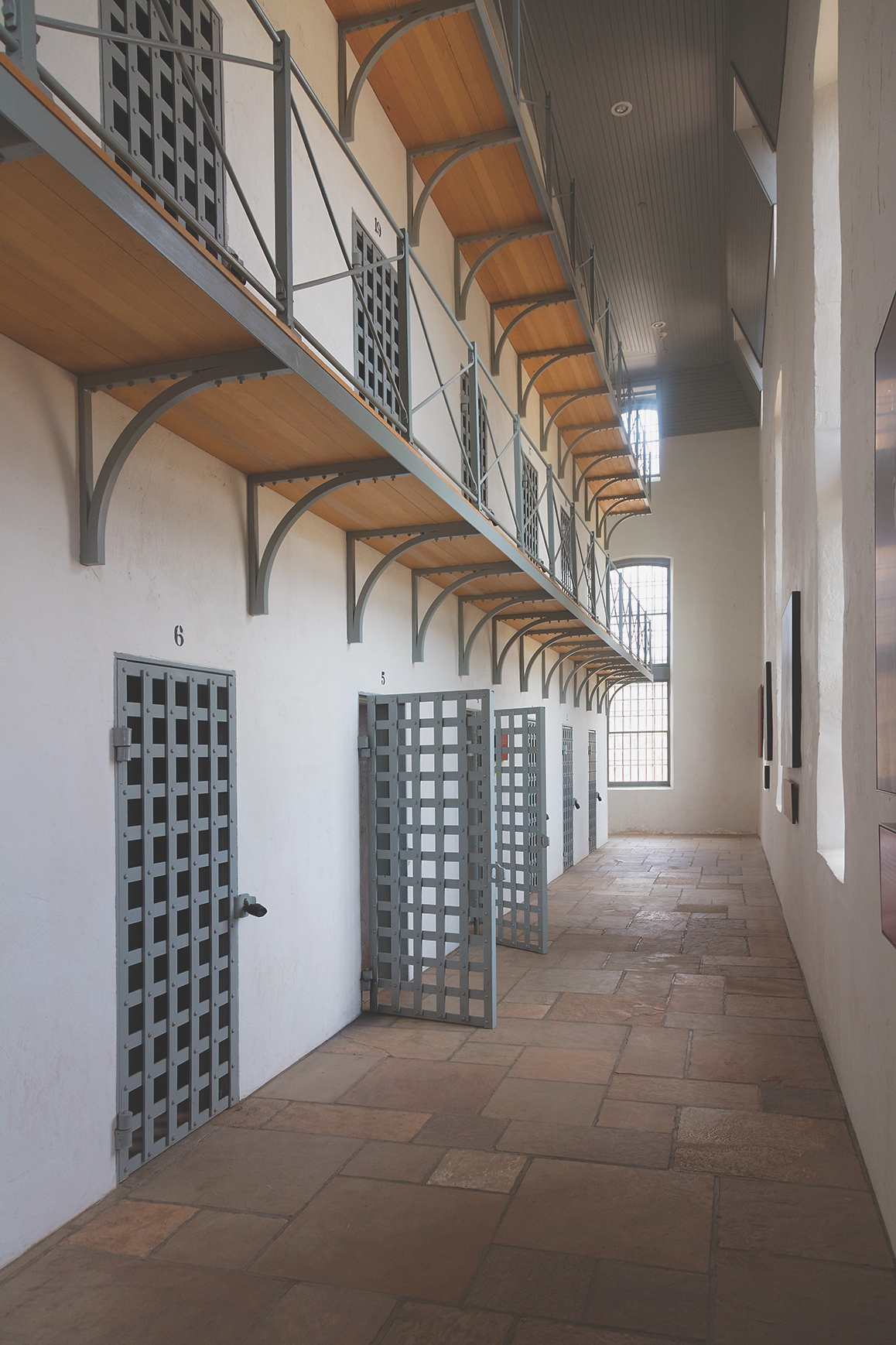
Laramie: A Frontier University Town
Home to the University of Wyoming, Laramie offers a unique blend of frontier history and academic influence. The Wyoming Territorial Prison State Historic Site, where outlaws like Butch Cassidy were incarcerated, gives visitors a glimpse into the hard life of those who faced the law. Laramie was also a key stop on the Union Pacific Railroad and is known for its historic downtown, where Victorian architecture tells the tale of a town that grew alongside the railroad. The Laramie Plains Museum offers additional insights into the town’s development and its role as a center for trade and culture in the 19th century.
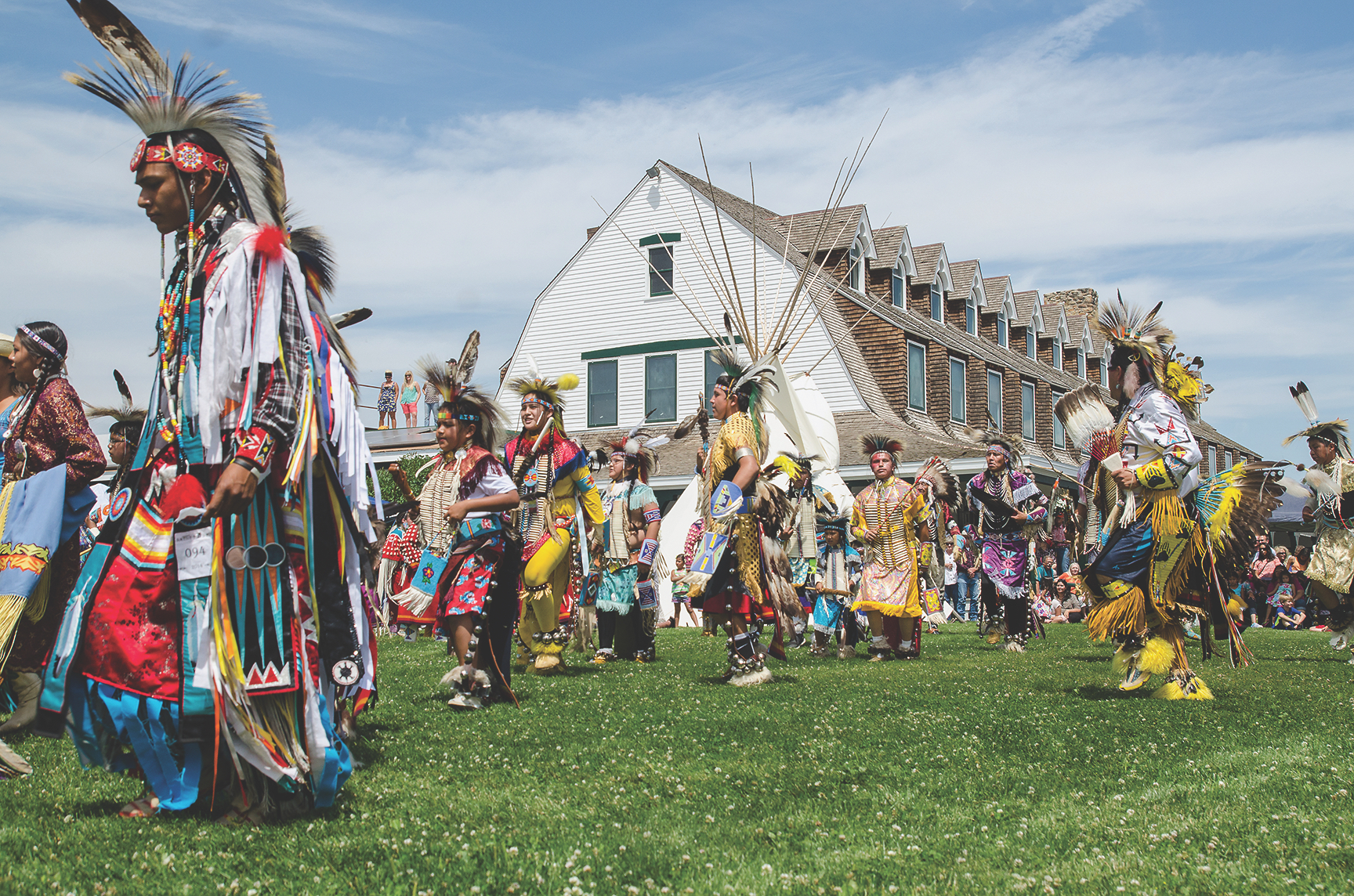
Sheridan: The Gateway to the Bighorns
Situated at the foot of the Bighorn Mountains, Sheridan is a town with strong ties to the cattle ranching era. Its historic downtown, with well-preserved 19th-century buildings, is a great place to experience Western hospitality. The Kendrick Mansion, built by a prominent local rancher, provides a glimpse into the opulence enjoyed by the area’s wealthy settlers. For those interested in military history, the nearby Fort Phil Kearny State Historic Site marks the location of an important fort during the Indian Wars and the infamous Fetterman Massacre of 1866. No visit to Sheridan would be complete without a visit to the Mint Bar and Kings Saddlery and Museum. The Sheridan Inn has always been a favorite place to stay among the many accommodations Sheridan has to offer.
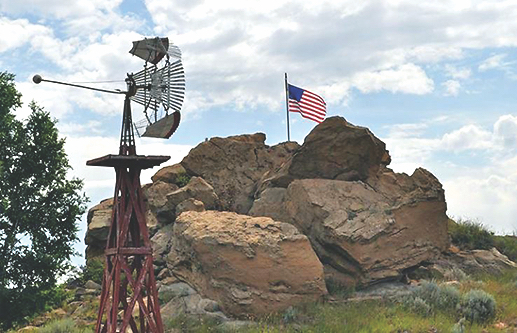
Gillette: The Energy Heartland
Though today Gillette is known as the “Energy Capital of the Nation,” its history is deeply rooted in the railroad and coal mining industries that shaped its early growth. While the town is a modern-day hub, the Campbell County Rockpile Museum offers an intriguing look at the area’s mining and railroad history, as well as its Native American heritage. The town is also close to the vast open spaces and natural beauty of the Powder River Basin, providing a perfect base for outdoor adventurers looking to explore Wyoming’s backcountry.
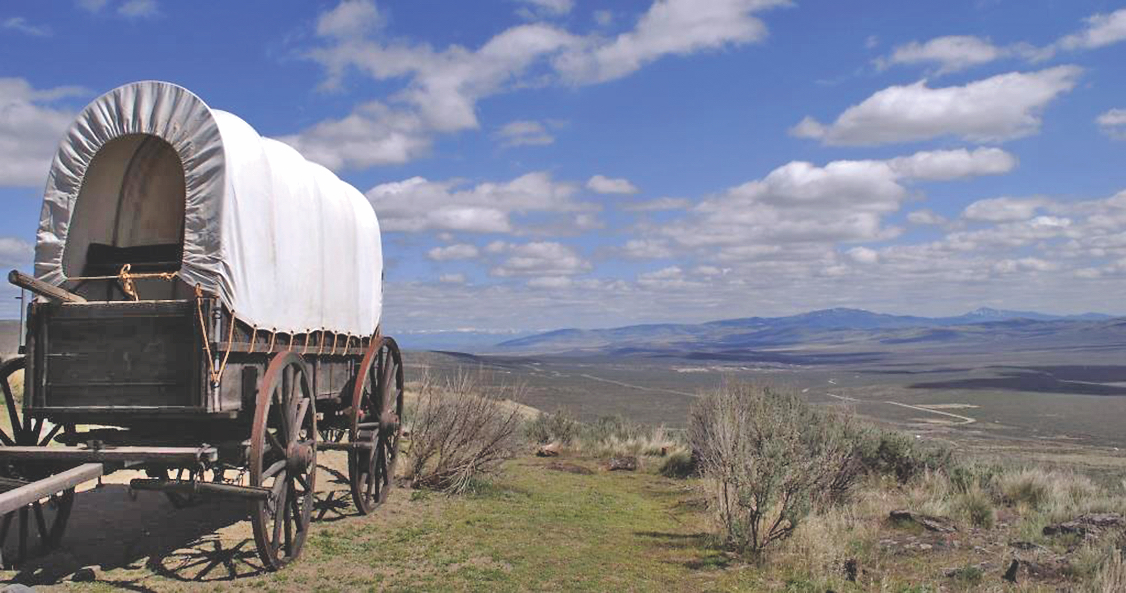
Casper: The Historic Crossroads of the American West
Casper, the second-largest city in Wyoming, serves as a crossroads of history, where the Oregon, Mormon and California Trails converged. The National Historic Trails Interpretive Center is a must-see, providing an immersive experience into what it was like for pioneers traveling through the region. Casper is also home to the Fort Caspar Museum, which showcases the town’s military history during the Indian Wars. Whether you’re interested in pioneer history, the rugged Wyoming landscape or the story of the early settlers, Casper offers a fascinating look at the state’s frontier past.
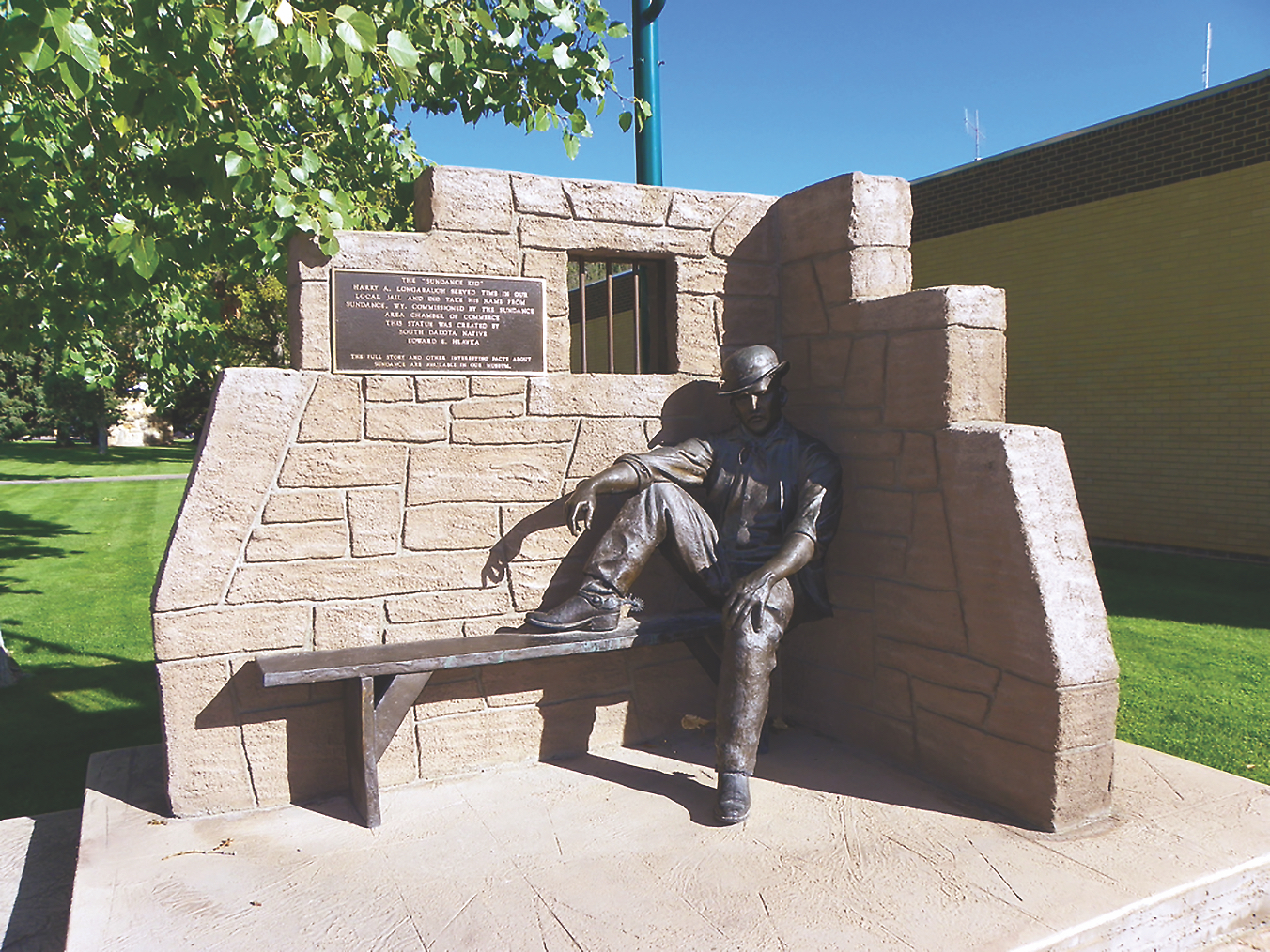
Sundance: The Outlaw’s Hideaway
This charming town, where the infamous Sundance Kid once sought refuge, is steeped in Western lore. The town’s proximity to the Black Hills and the Wyoming-Montana border made it a hideout for outlaws, including Butch Cassidy’s Wild Bunch. A nearby historical marker that tells the story of their time in the region. The town also offers a wealth of outdoor activities, including hiking in the beautiful Bear Lodge Mountains, making it a great spot for both history buffs and nature lovers.
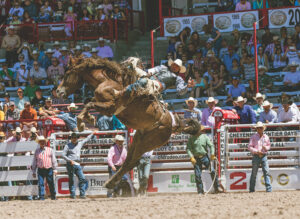
Cheyenne: Wyoming’s Capital of the Old West
As the state capital, Cheyenne is a city where the Old West meets the modern-day frontier. The city’s Western heritage is evident in its annual Cheyenne Frontier Days, one of the largest and oldest rodeo festivals in the country. Visitors can explore the Wyoming State Museum for exhibits on the state’s history, including Native American artifacts and pioneer stories. The Cheyenne Depot Museum, housed in a grand 1887 railroad depot, tells the story of how the railroad shaped the city. For those interested in military history, Fort D.A. Russell, now part of the city, offers a glimpse into the past, when it was a key outpost during the Indian Wars.

Encampment: A Pioneer’s Paradise
Encampment, located near the Medicine Bow National Forest, offers a quieter, more remote slice of Wyoming history. The town, once a resting place for pioneers on the Overland Trail, still holds a small-town charm and a deep connection to the region’s early settlers. The Grand Encampment Museum showcases artifacts from the days when pioneers and settlers passed through this area, including items from the days of the Overland Trail and the town’s mining heritage. Its scenic location also makes it a prime destination for outdoor activities like hiking, fishing and wildlife watching.
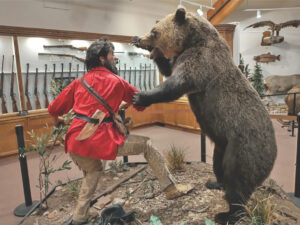
Pinedale: The Mountain Gateway
Settled in the shadows of the Wind River Range, Pinedale offers visitors a glimpse into Wyoming’s natural beauty and its frontier history. The Sublette County Historical Society Museum offers an excellent introduction to the region’s early fur trappers, pioneers and Native American tribes. Pinedale’s location makes it a perfect base for exploring the nearby Wind River Mountains, a region that was once a key part of the fur trade. The impressive Museum of the Mountain Man presents a visual and interpretive experience into the era of the mountain man, the Plains Indian and the Oregon Trail. The town also has a strong Western feel, with historic buildings and a welcoming community that embraces its past while looking to the future.

